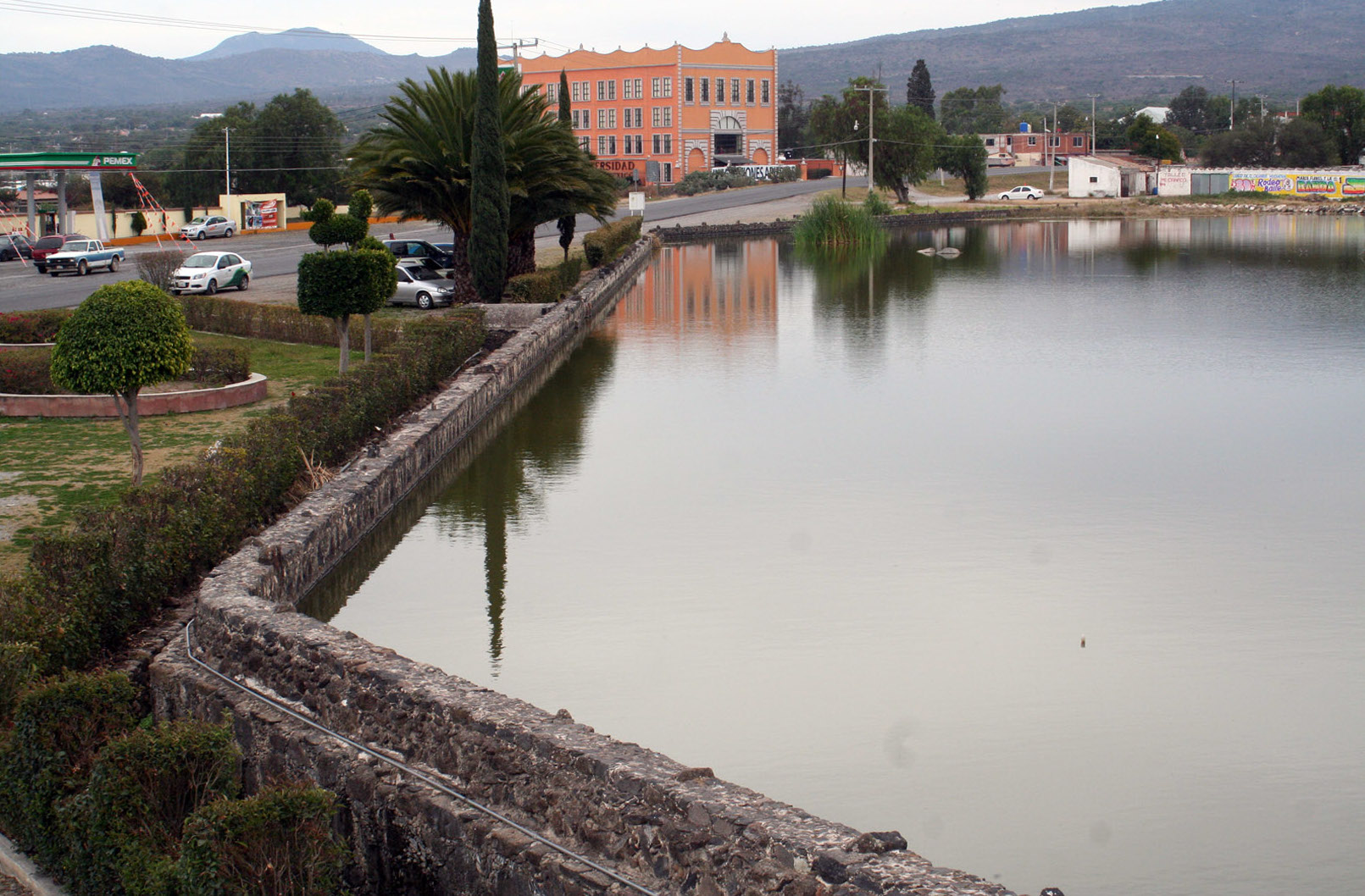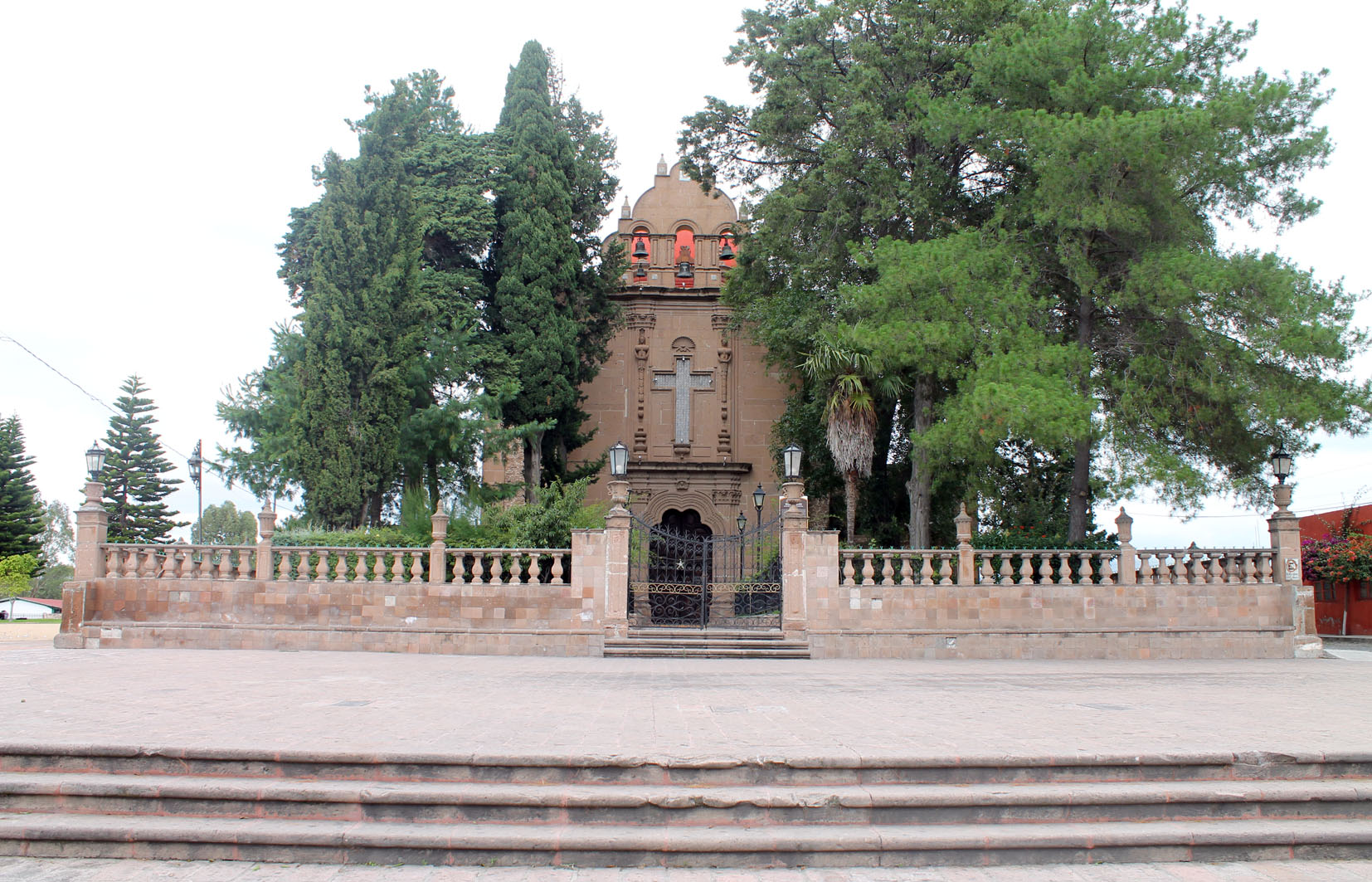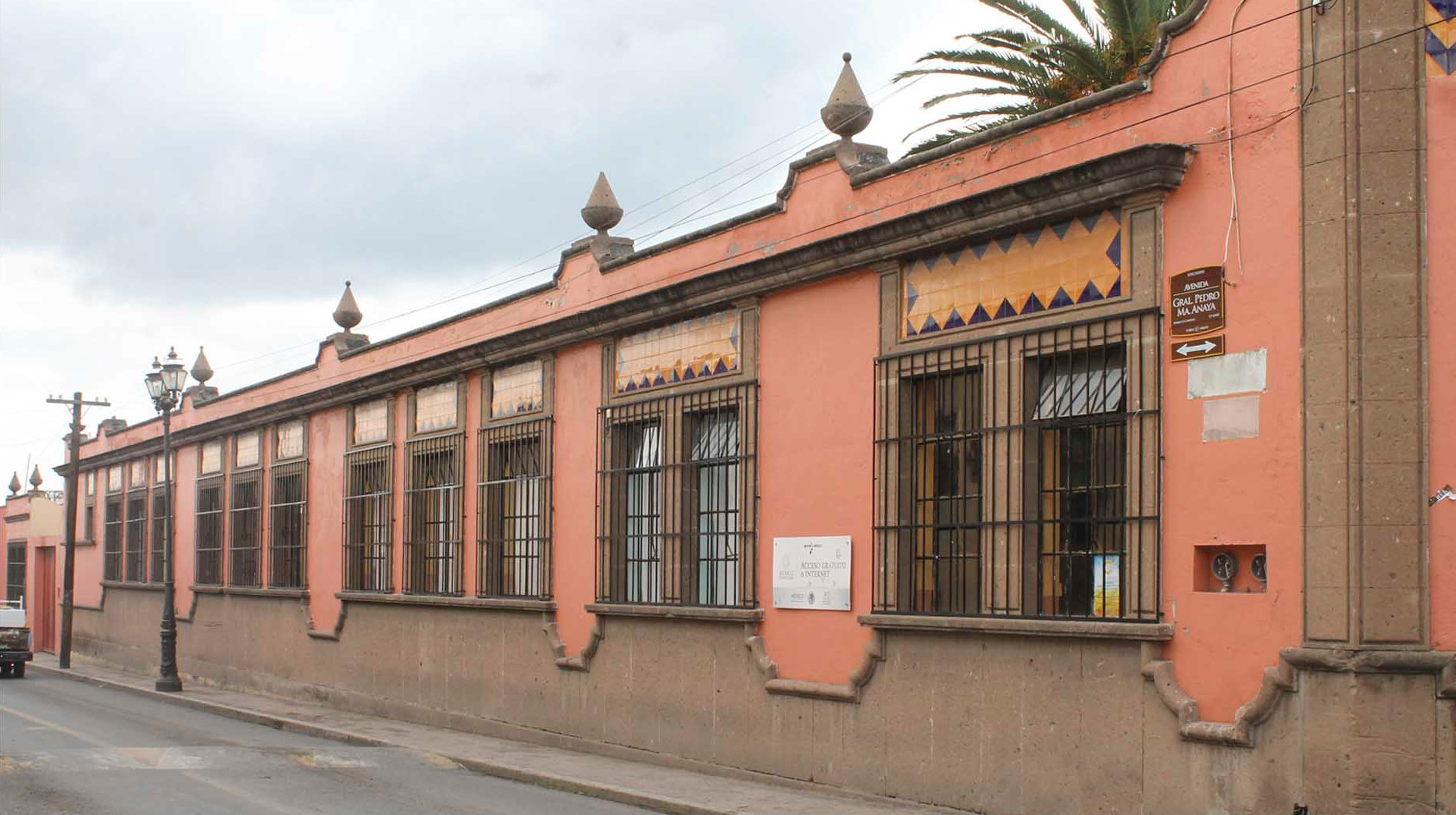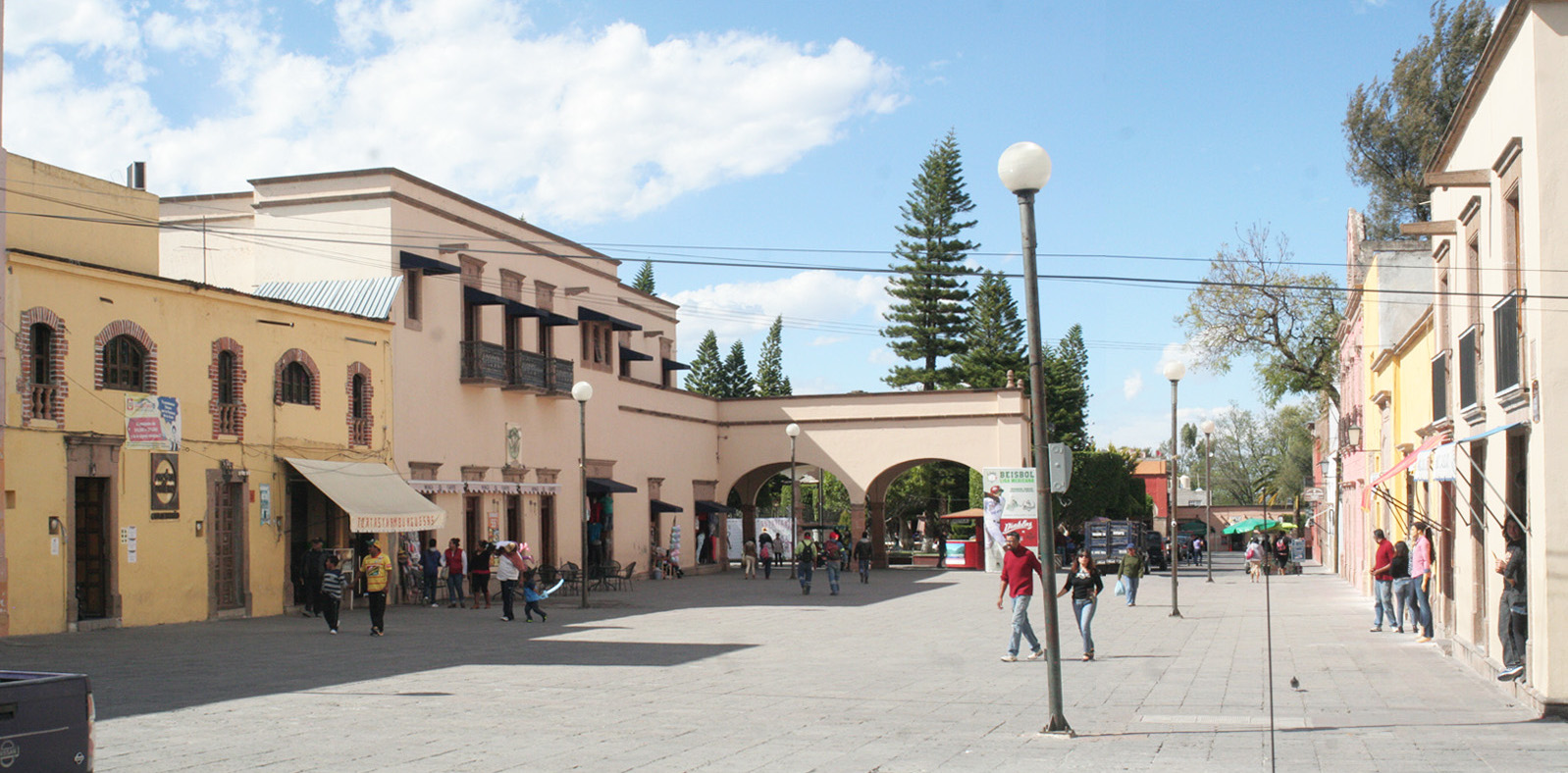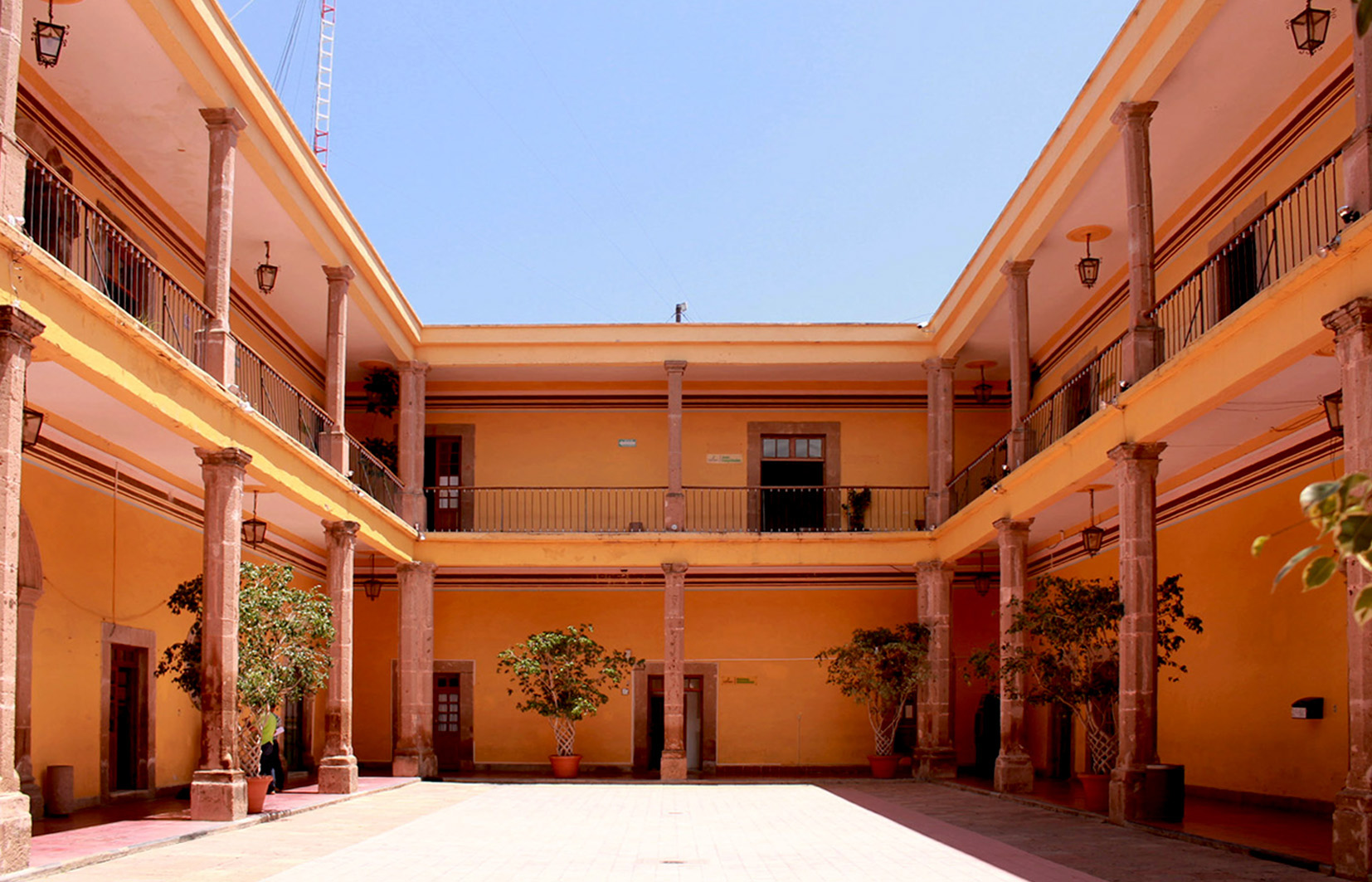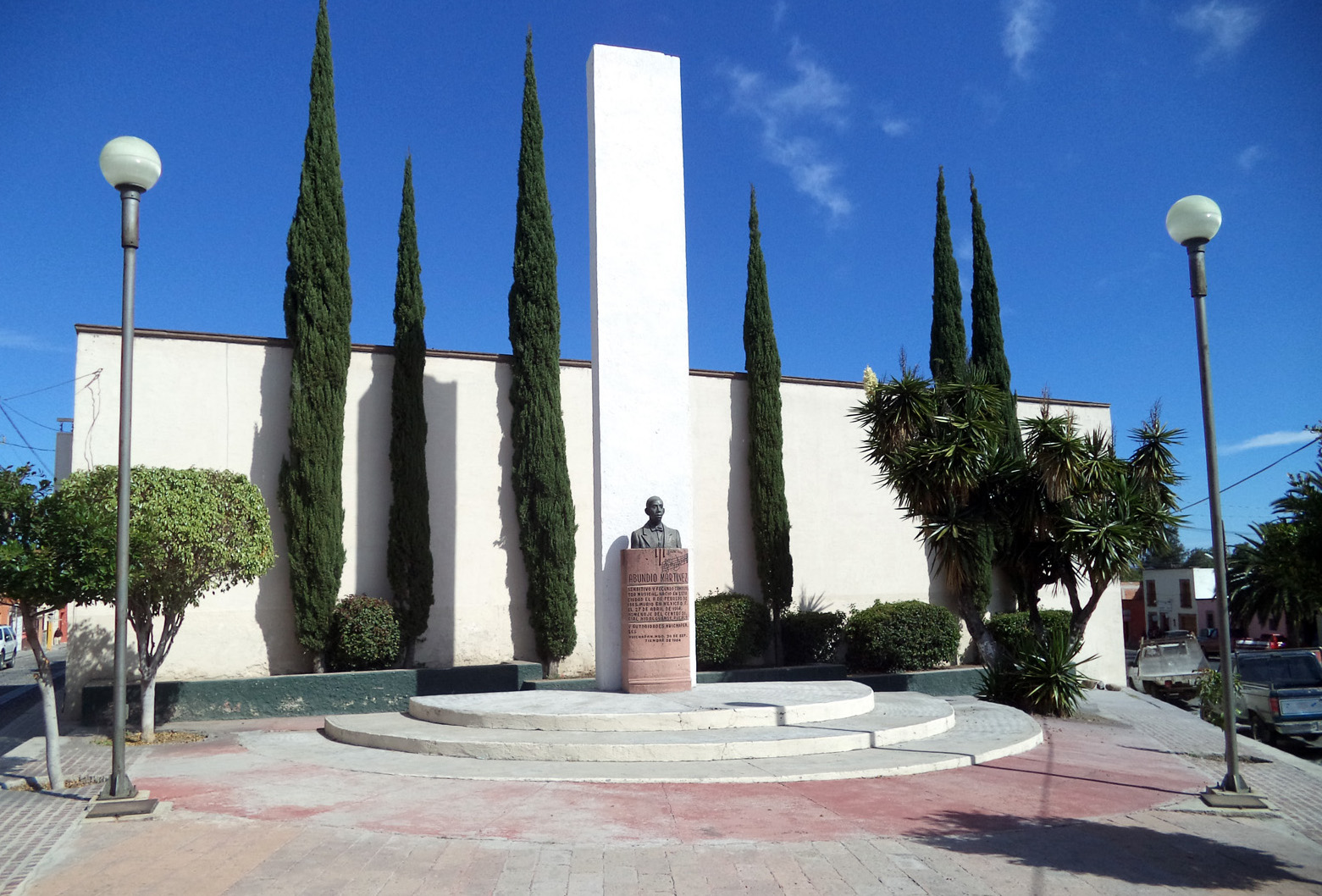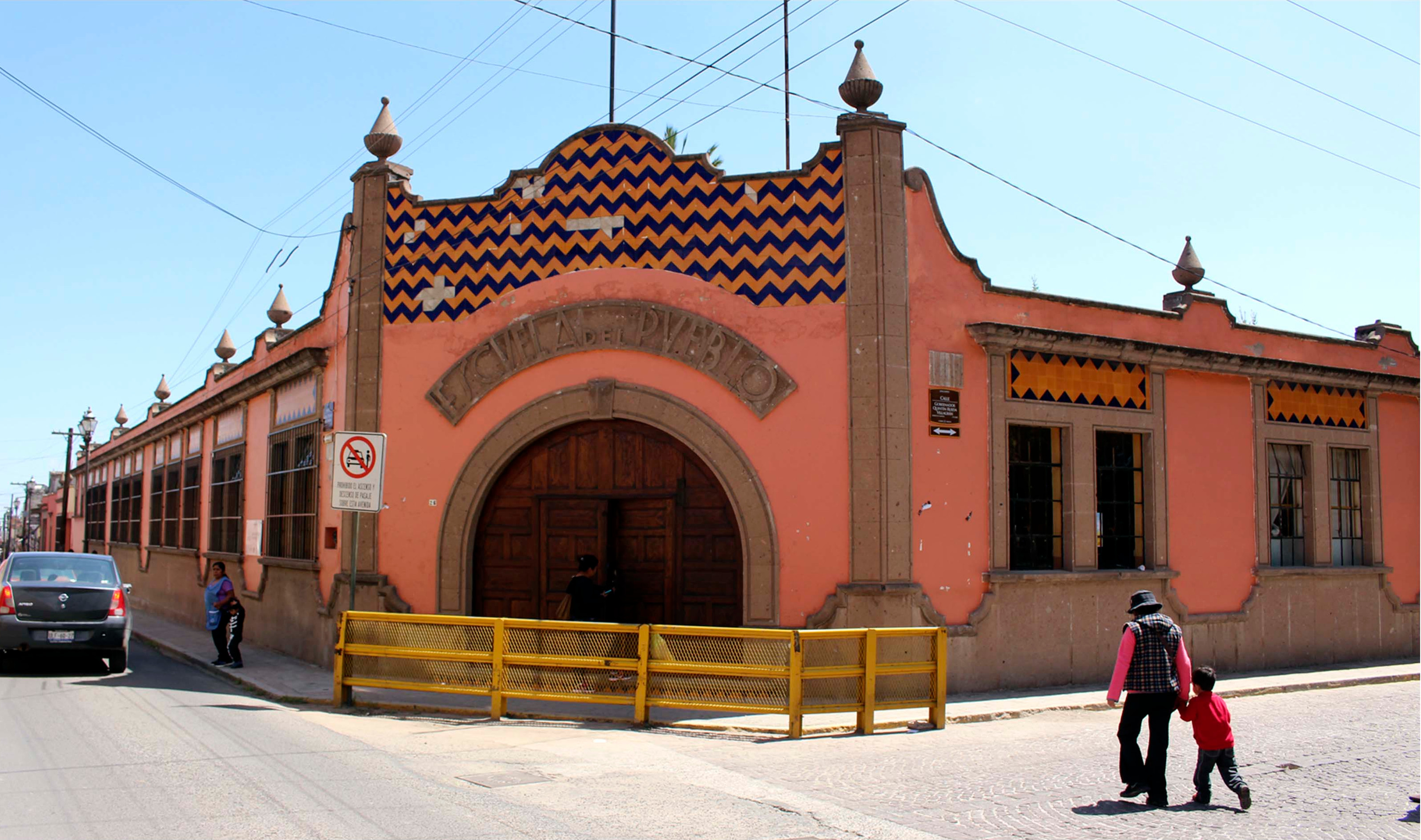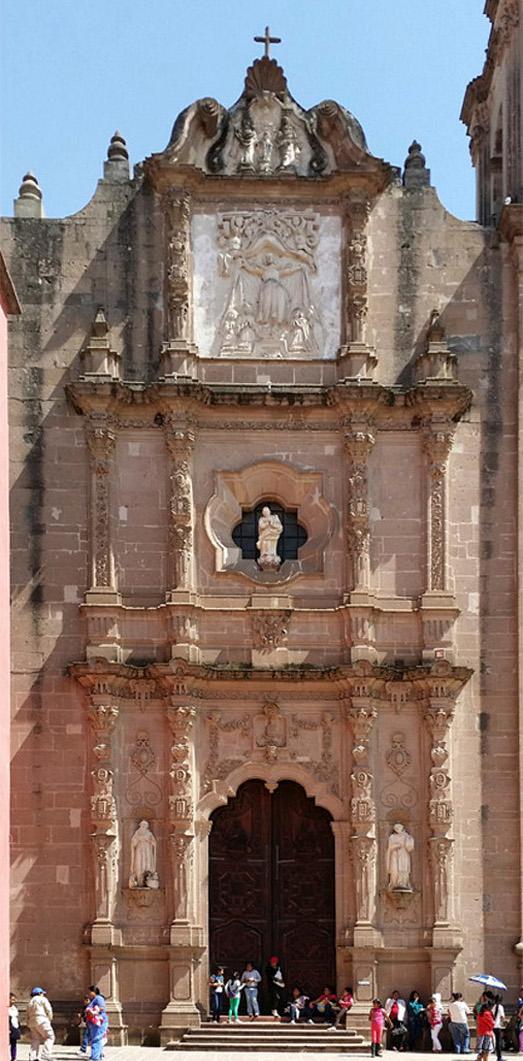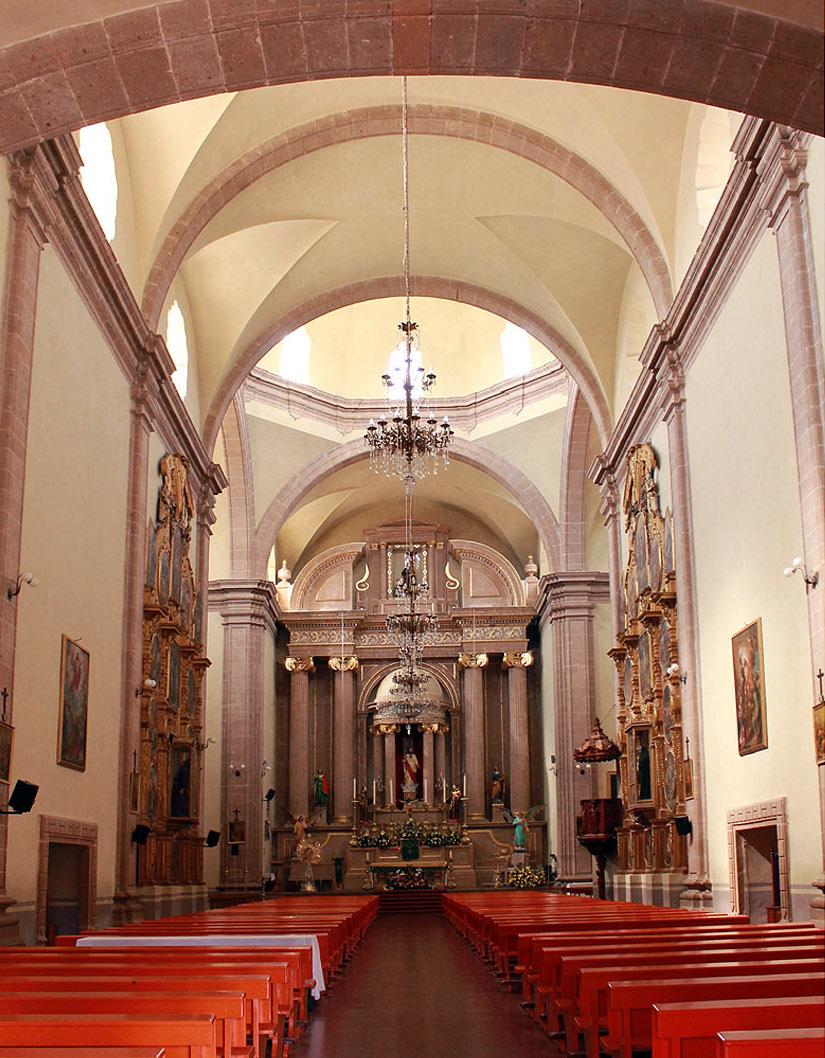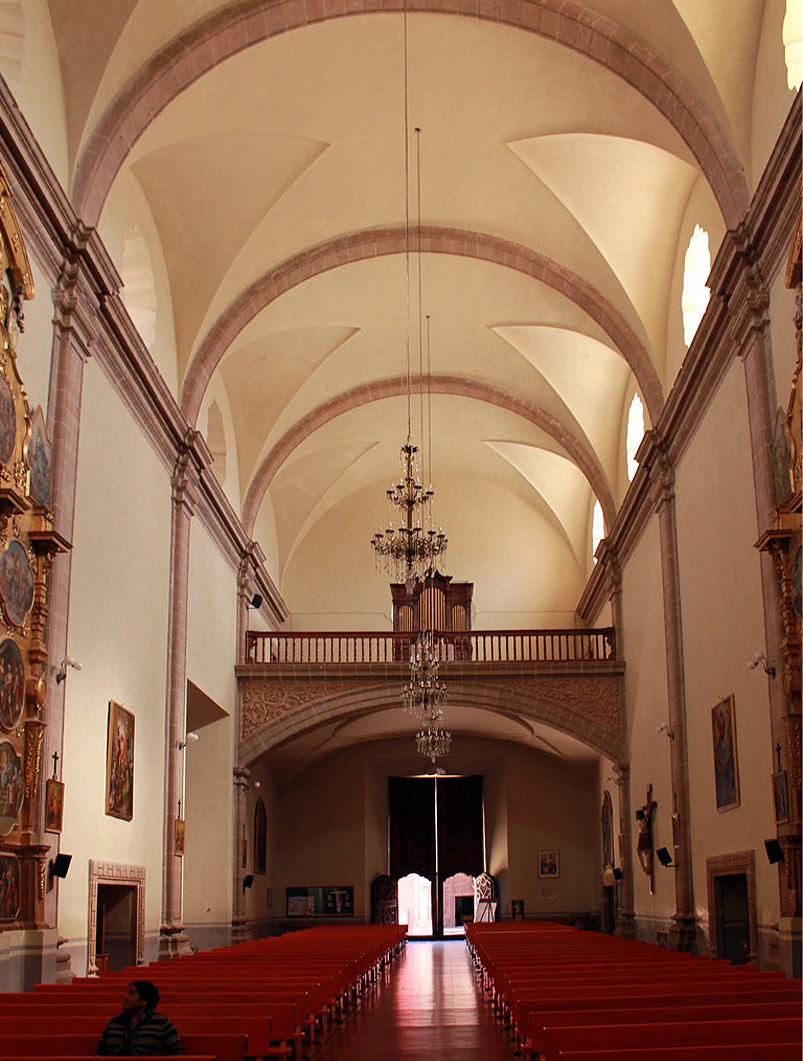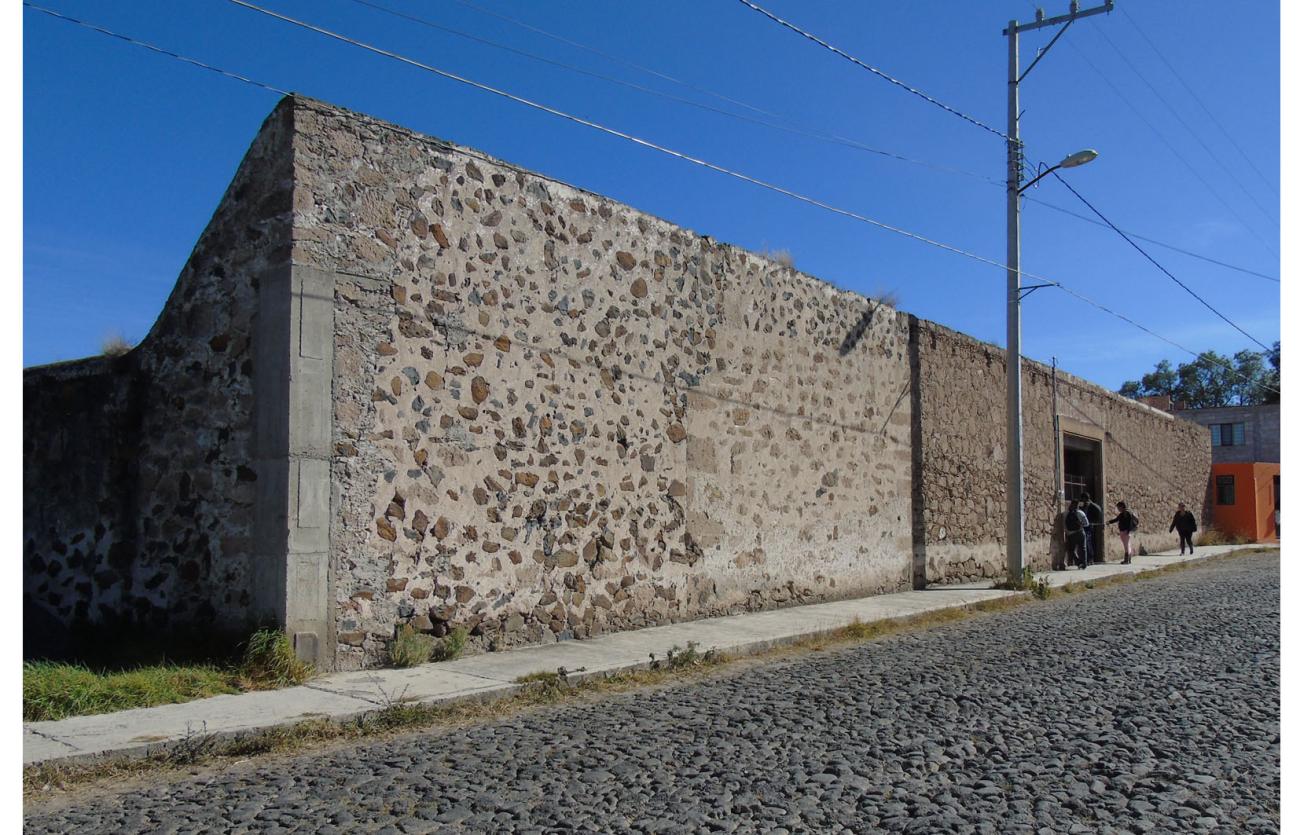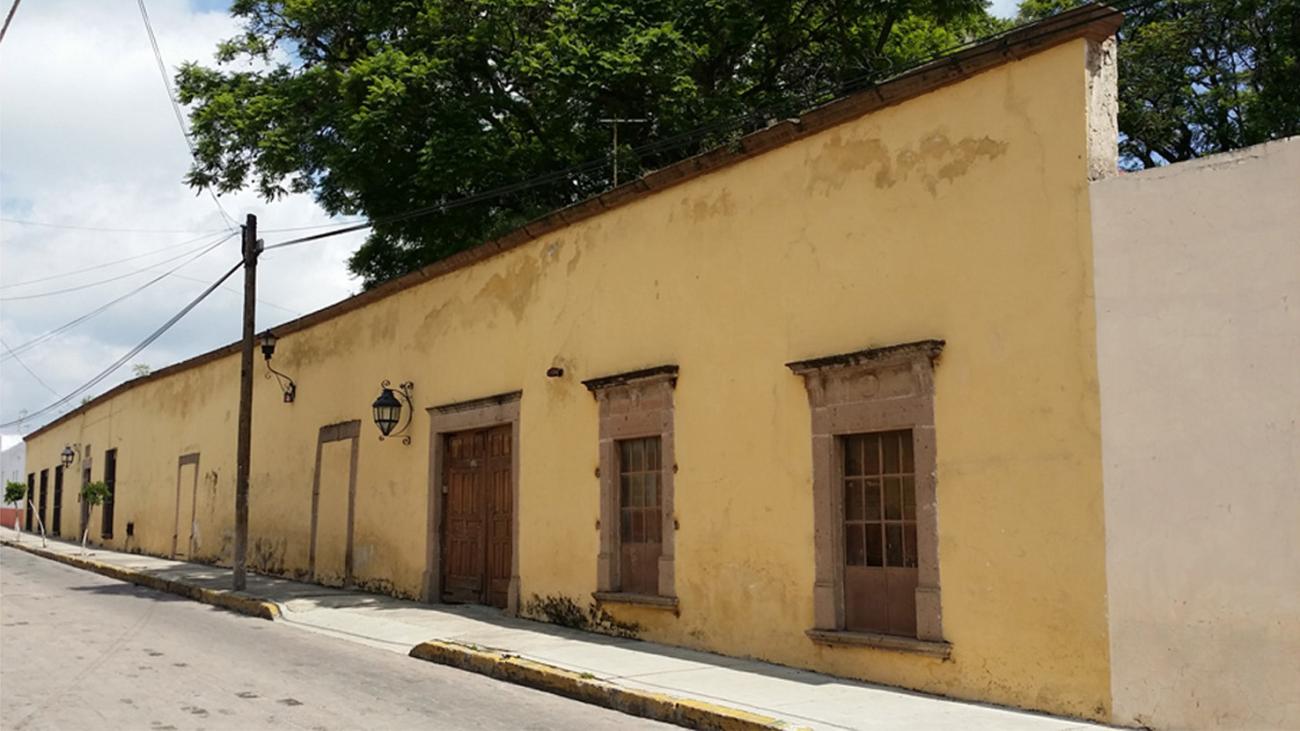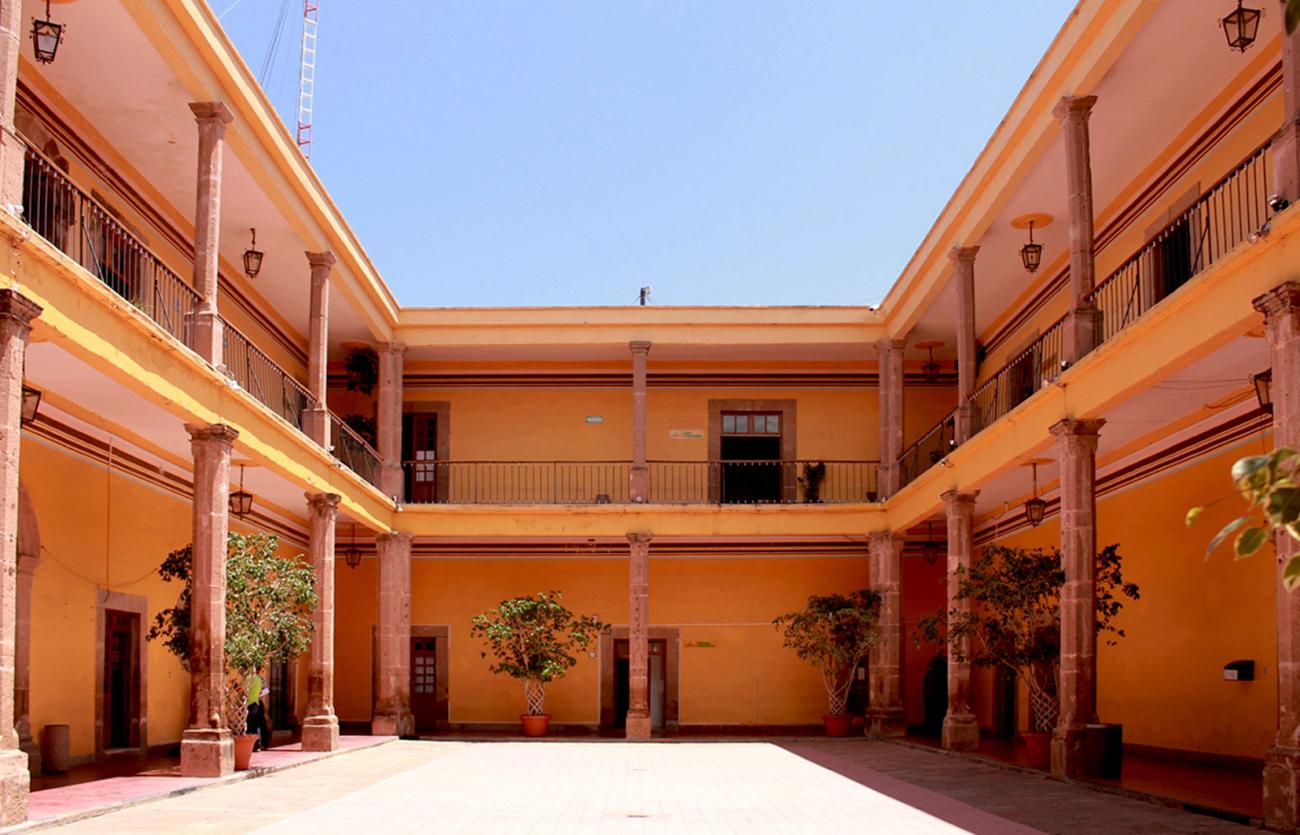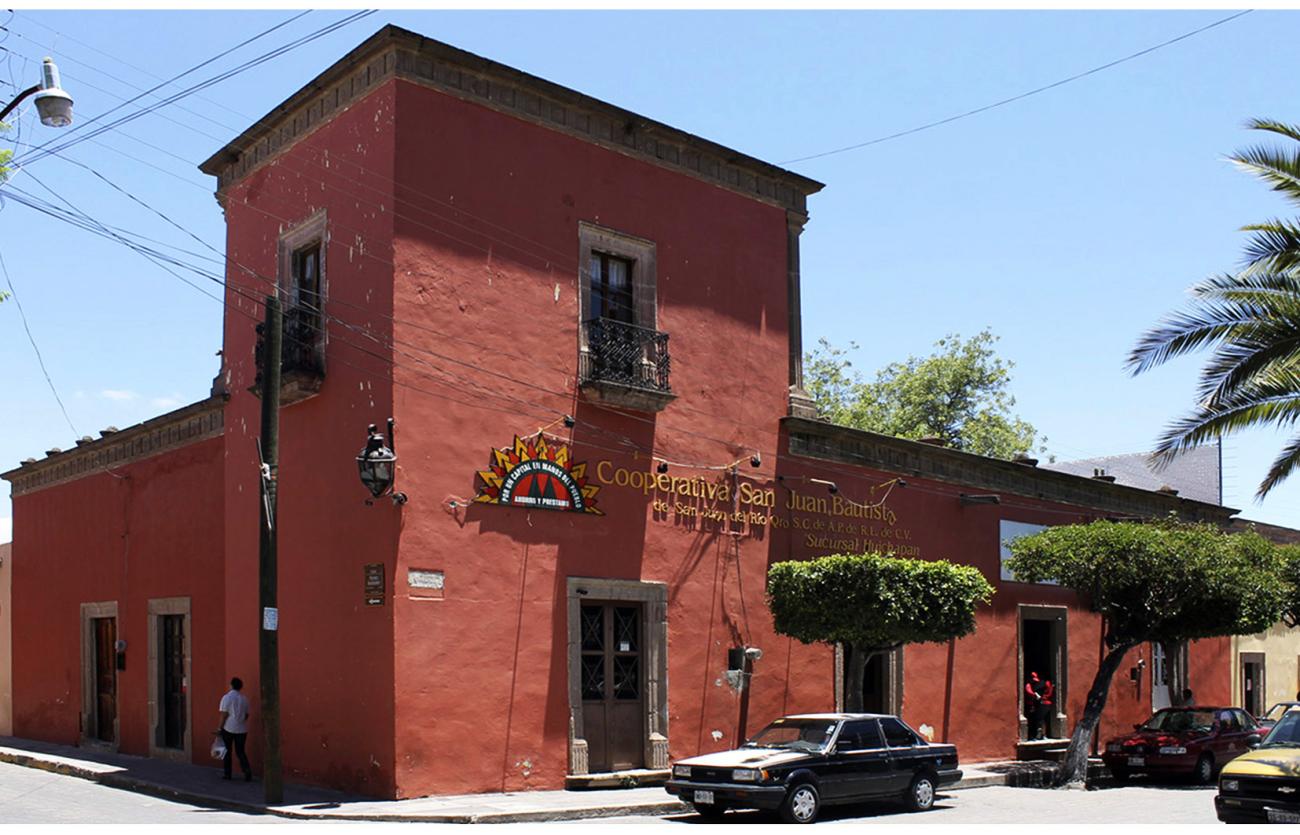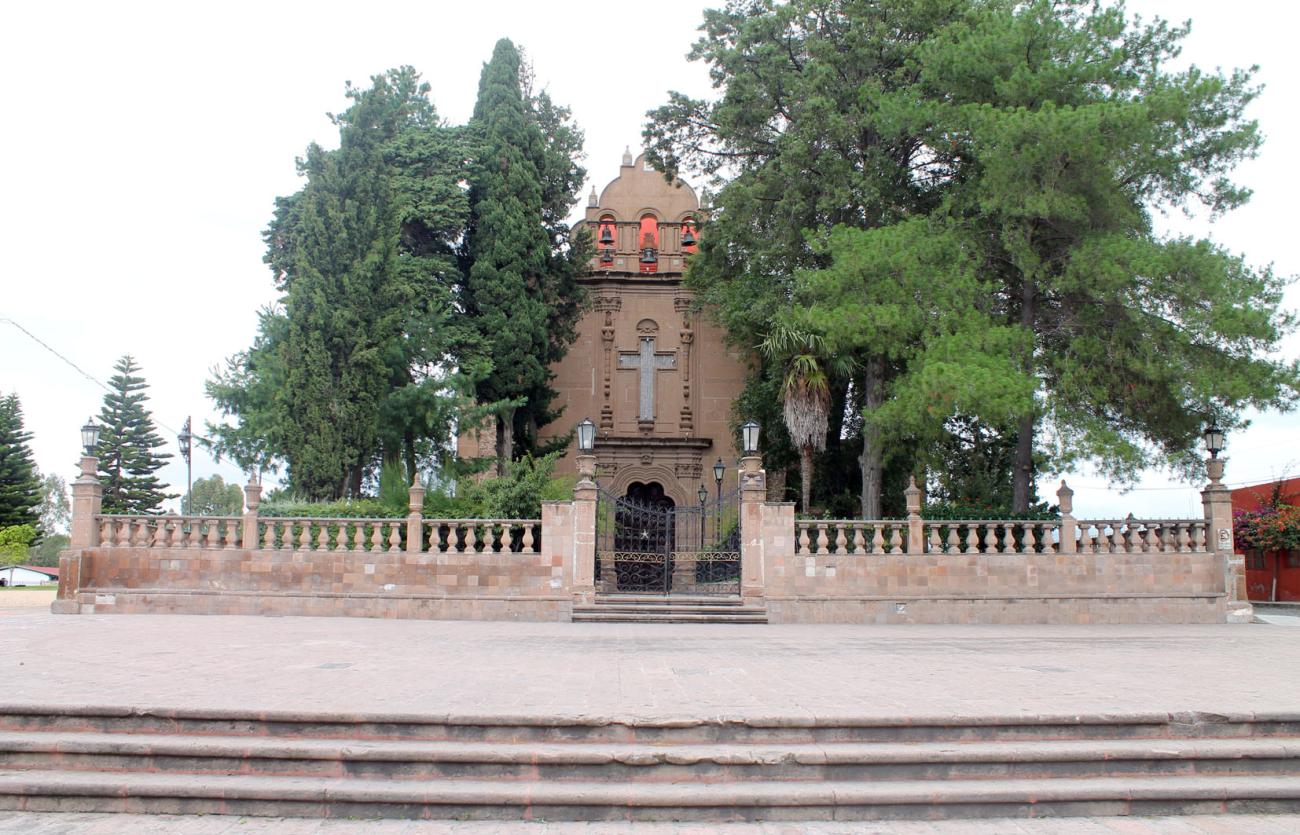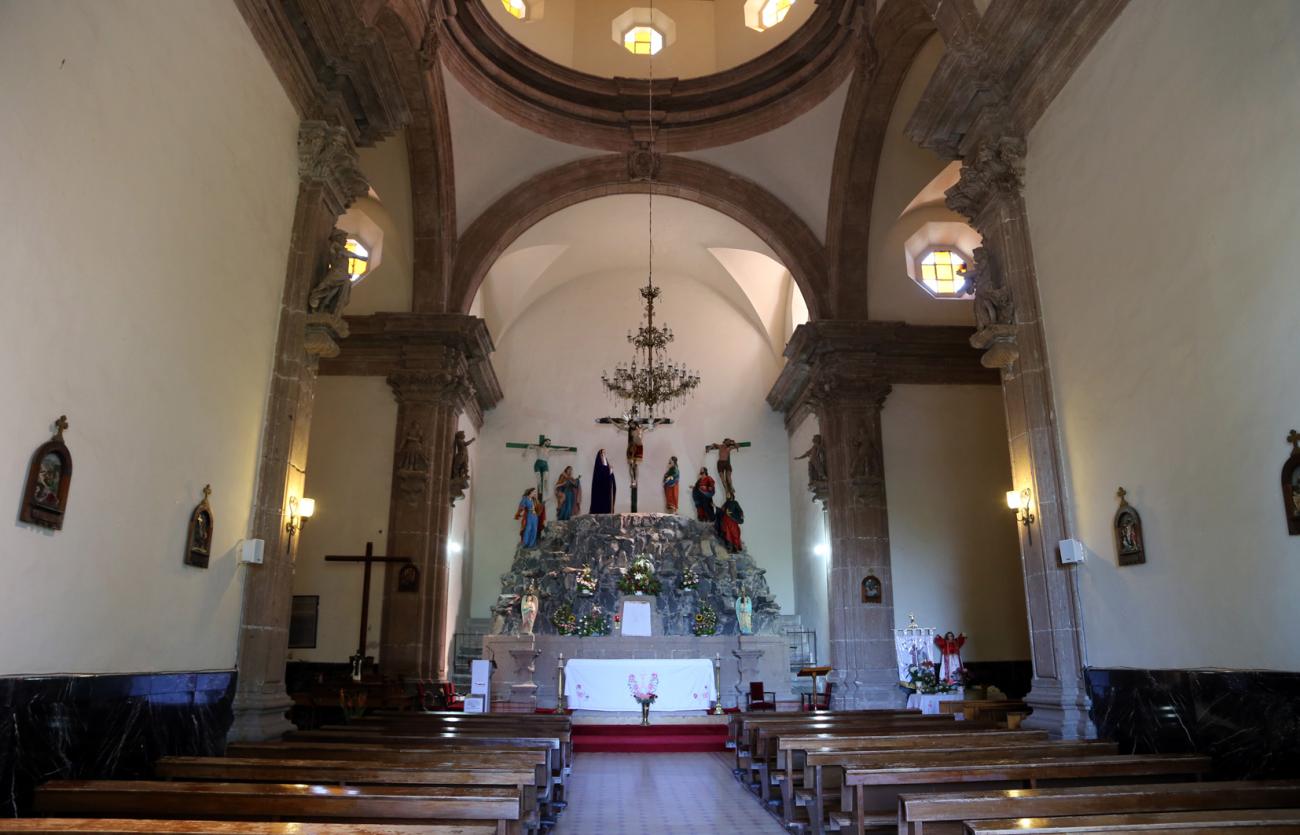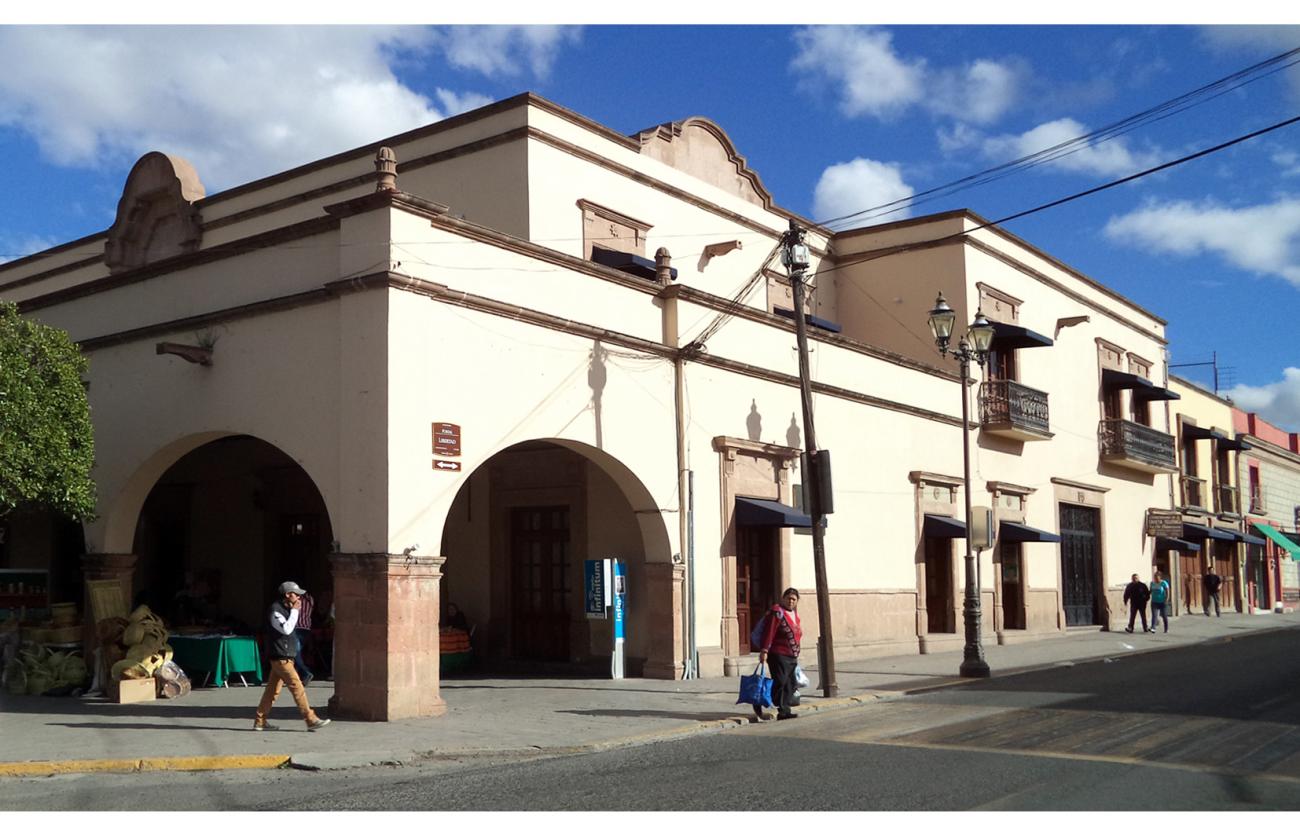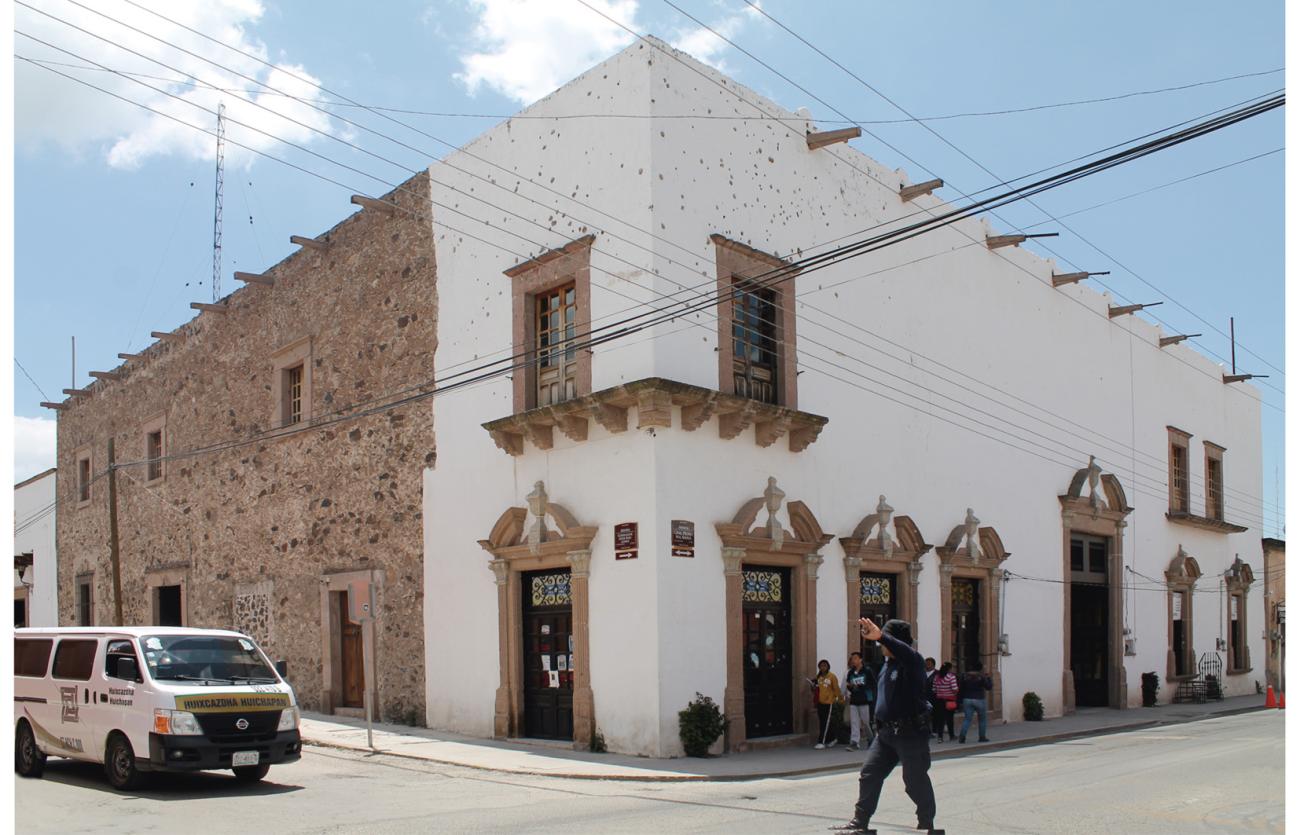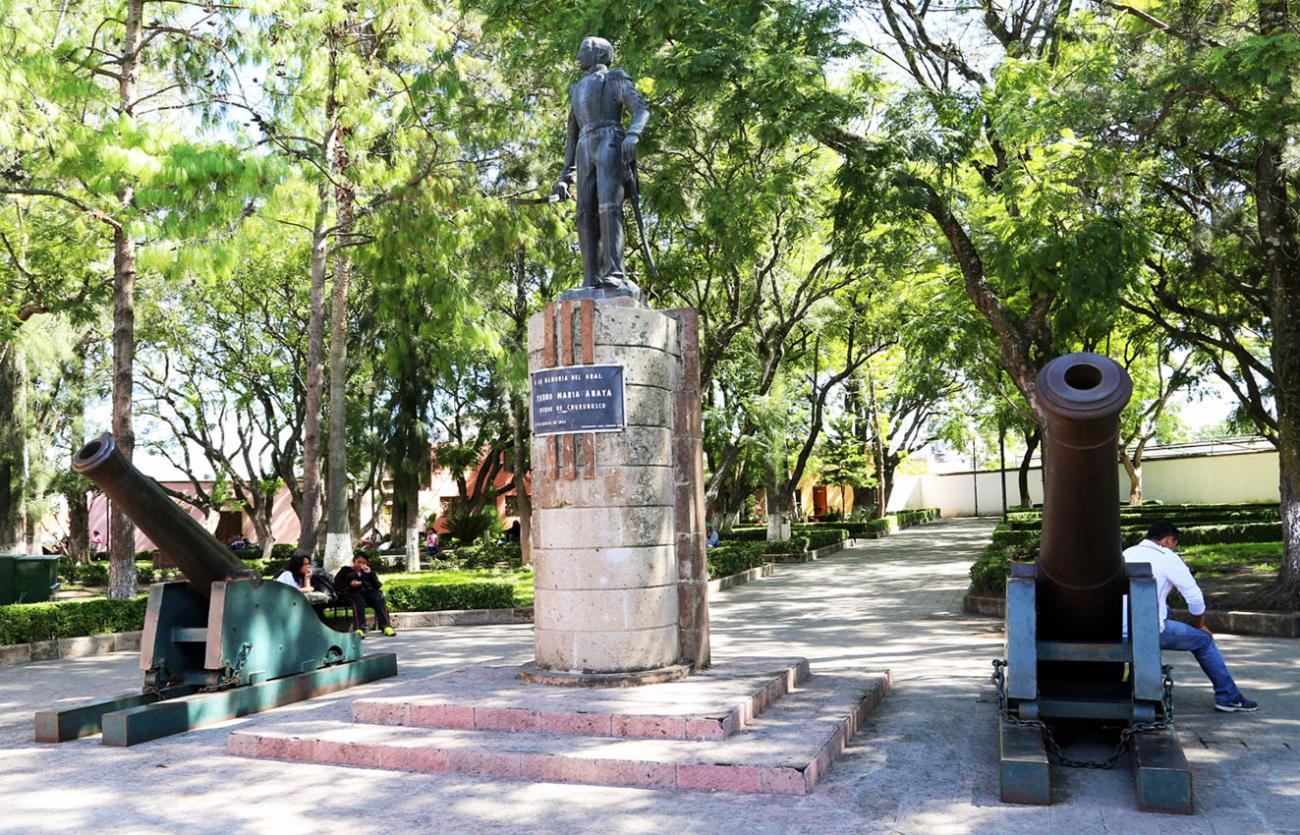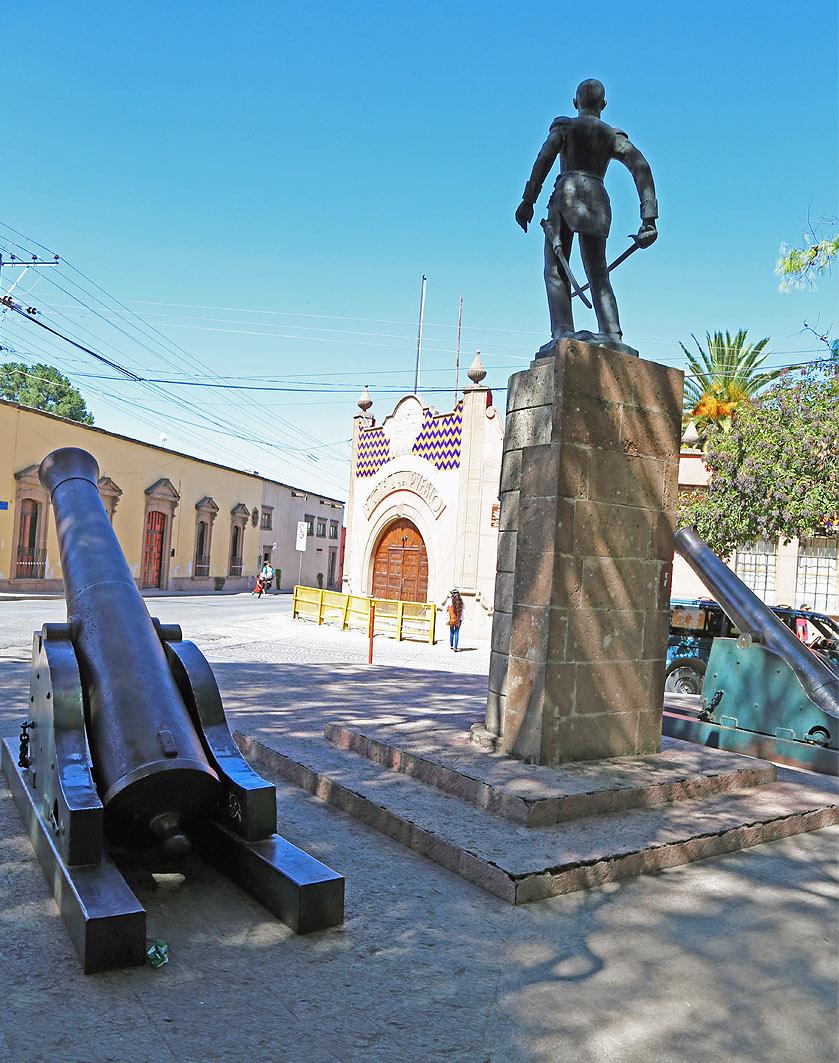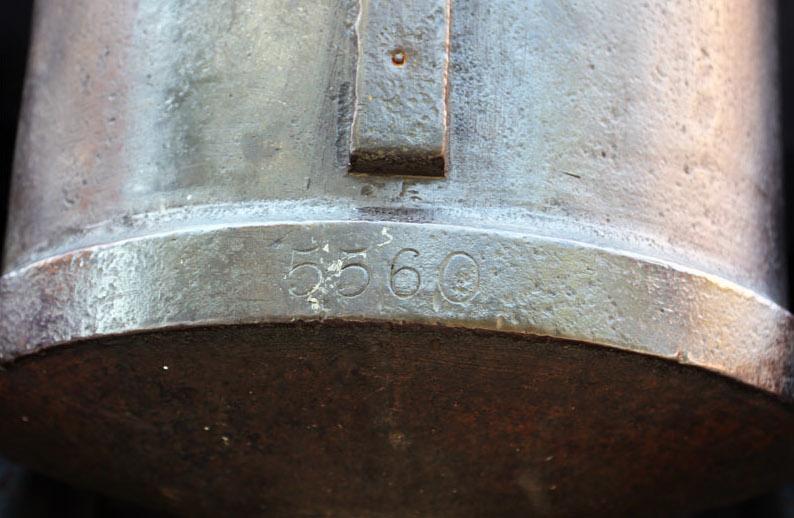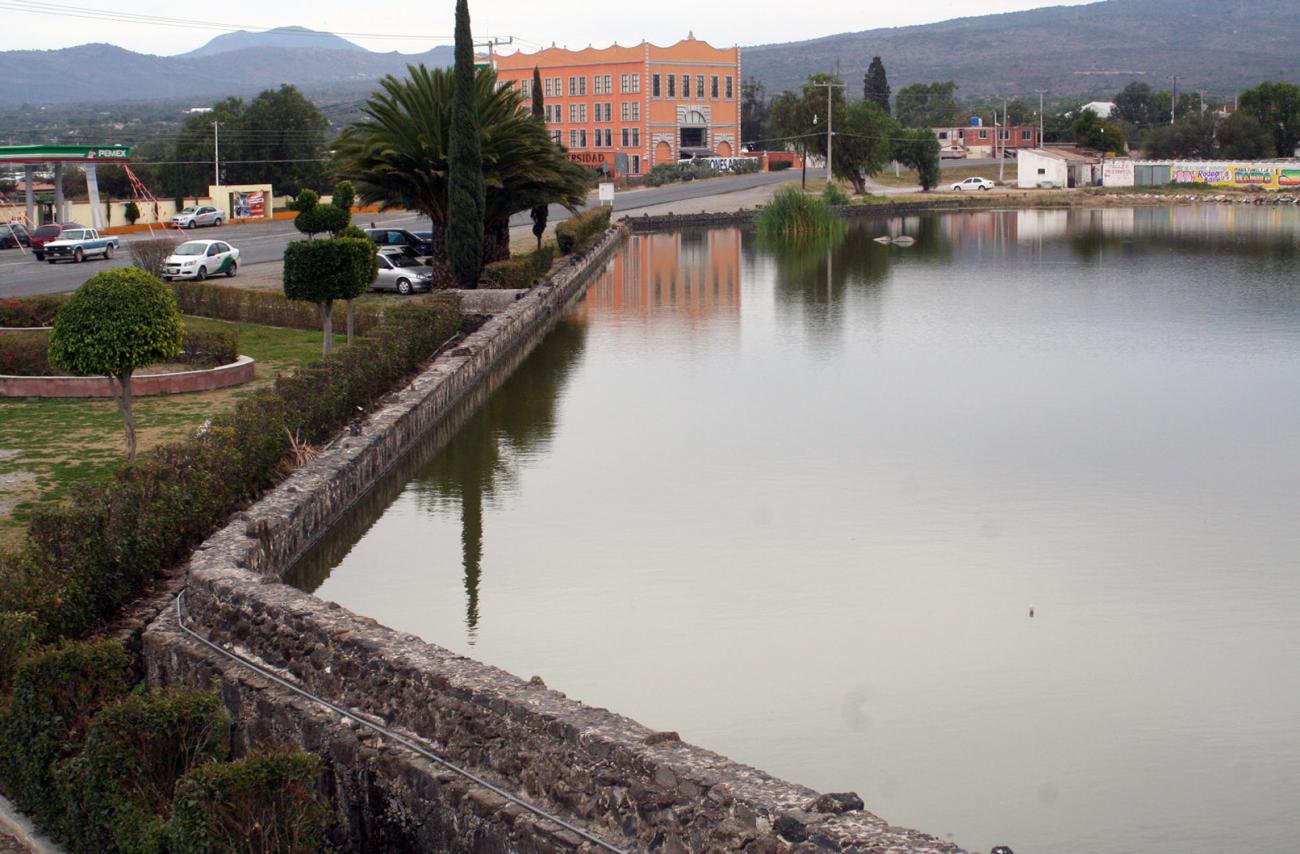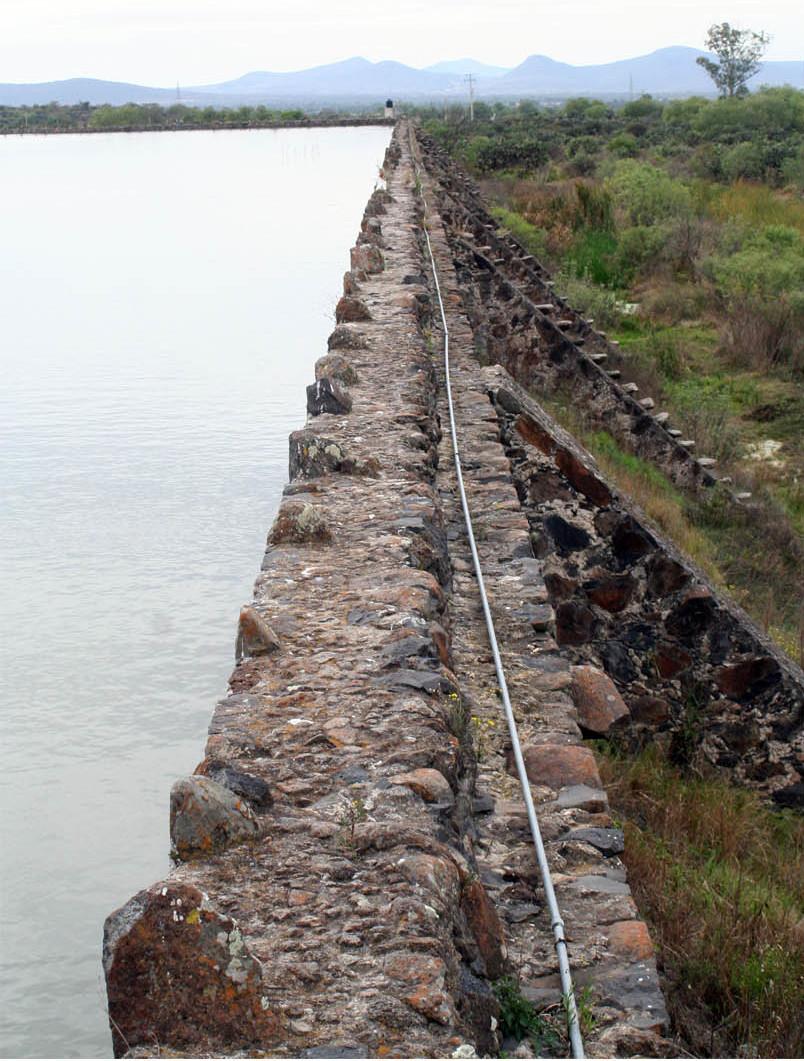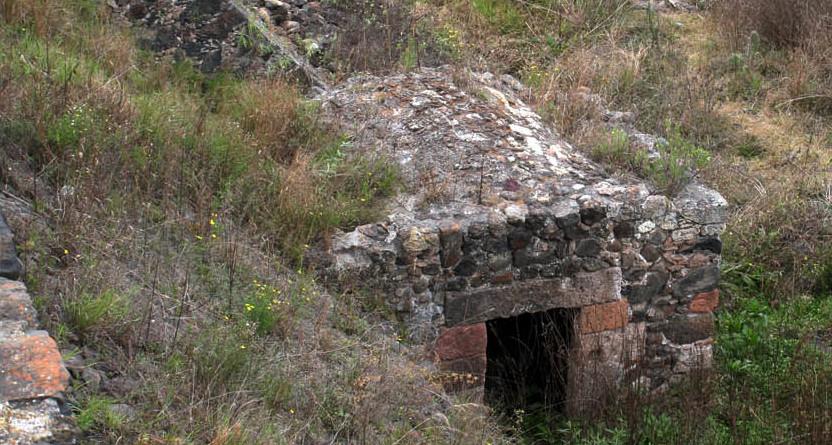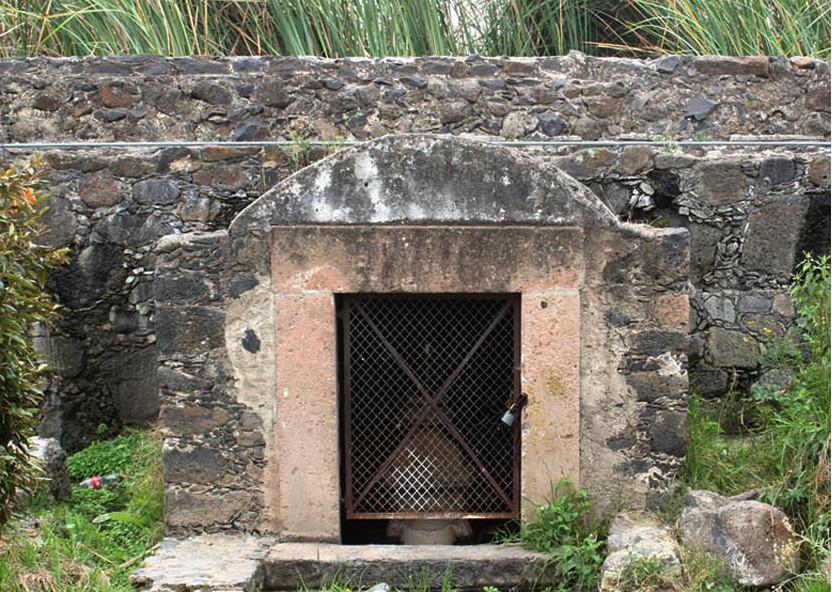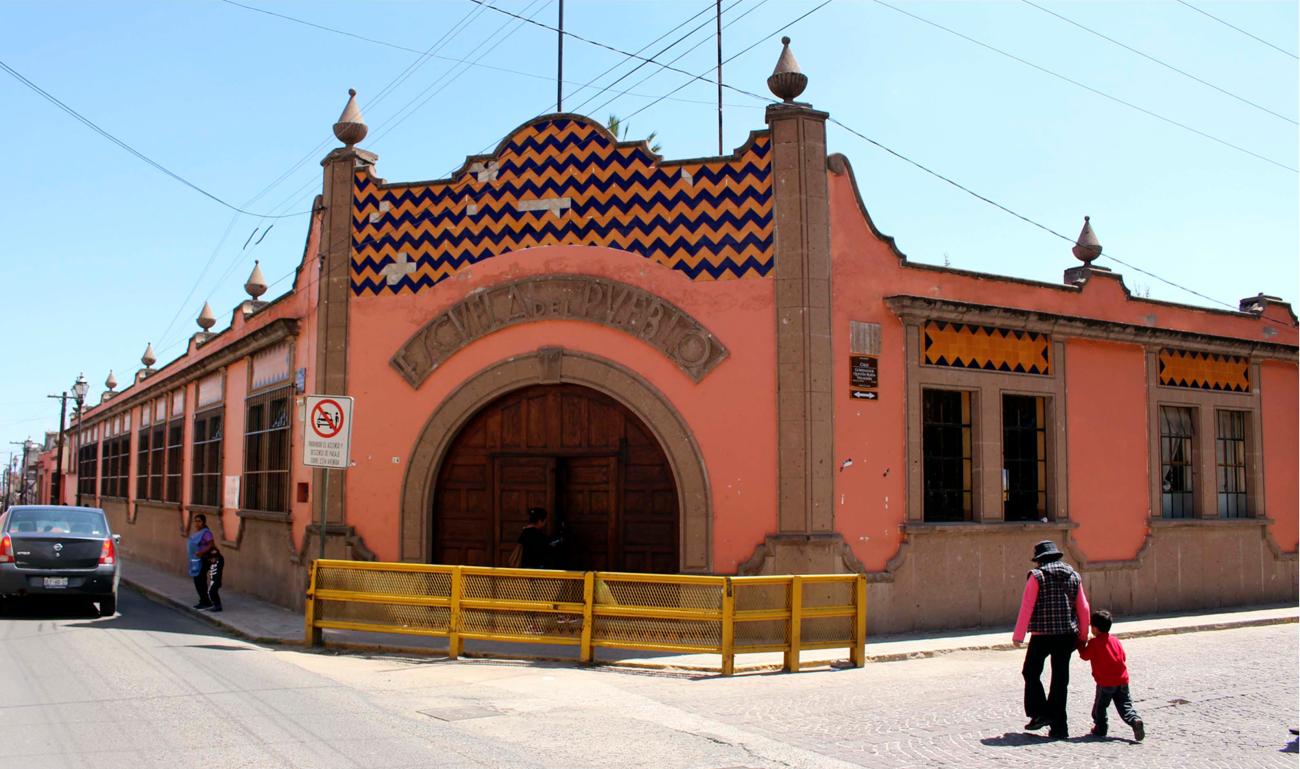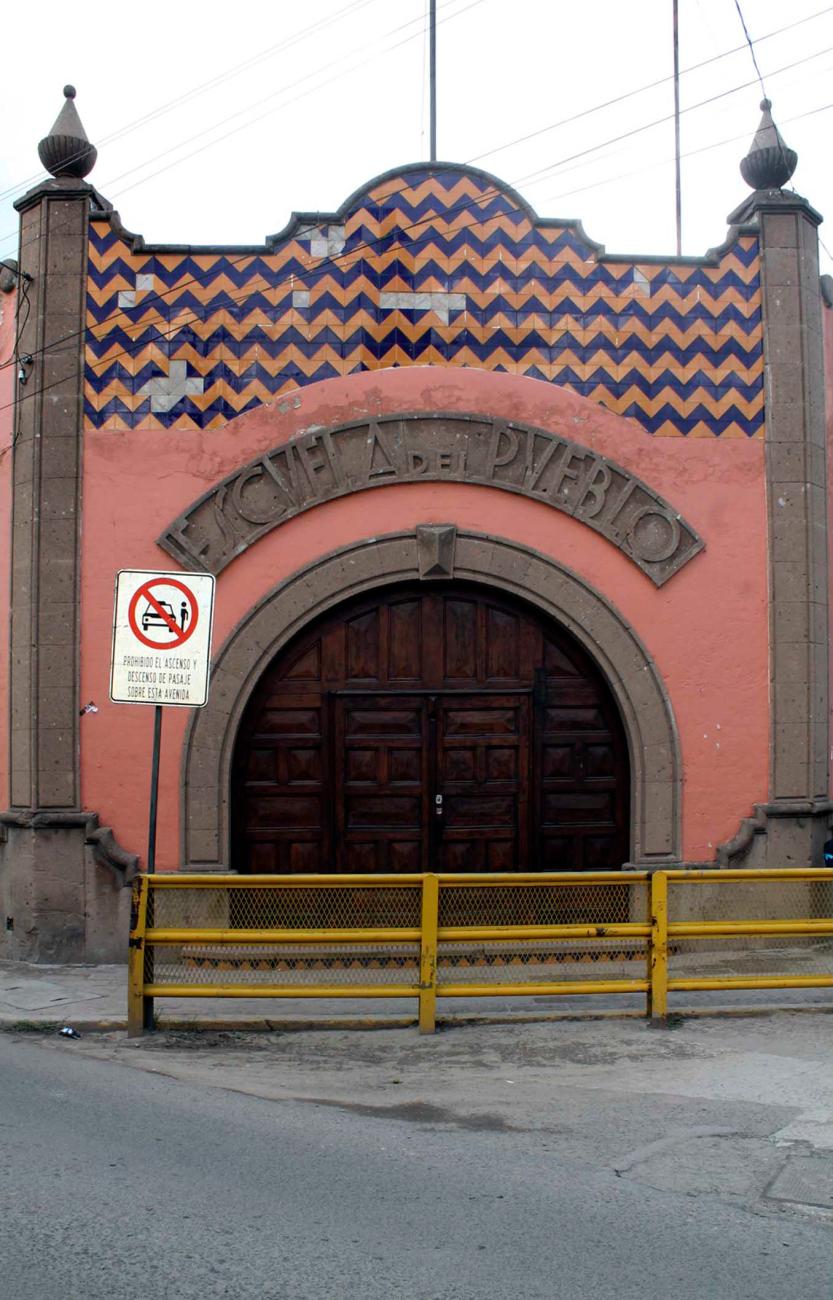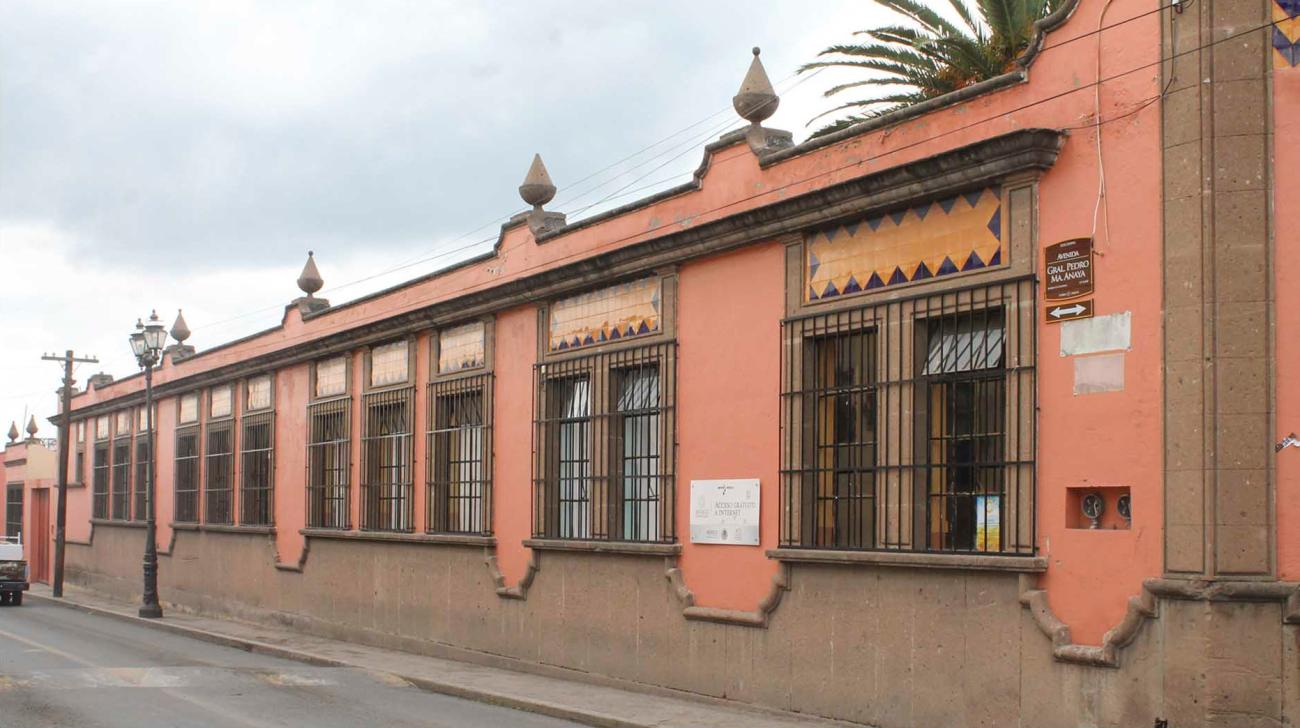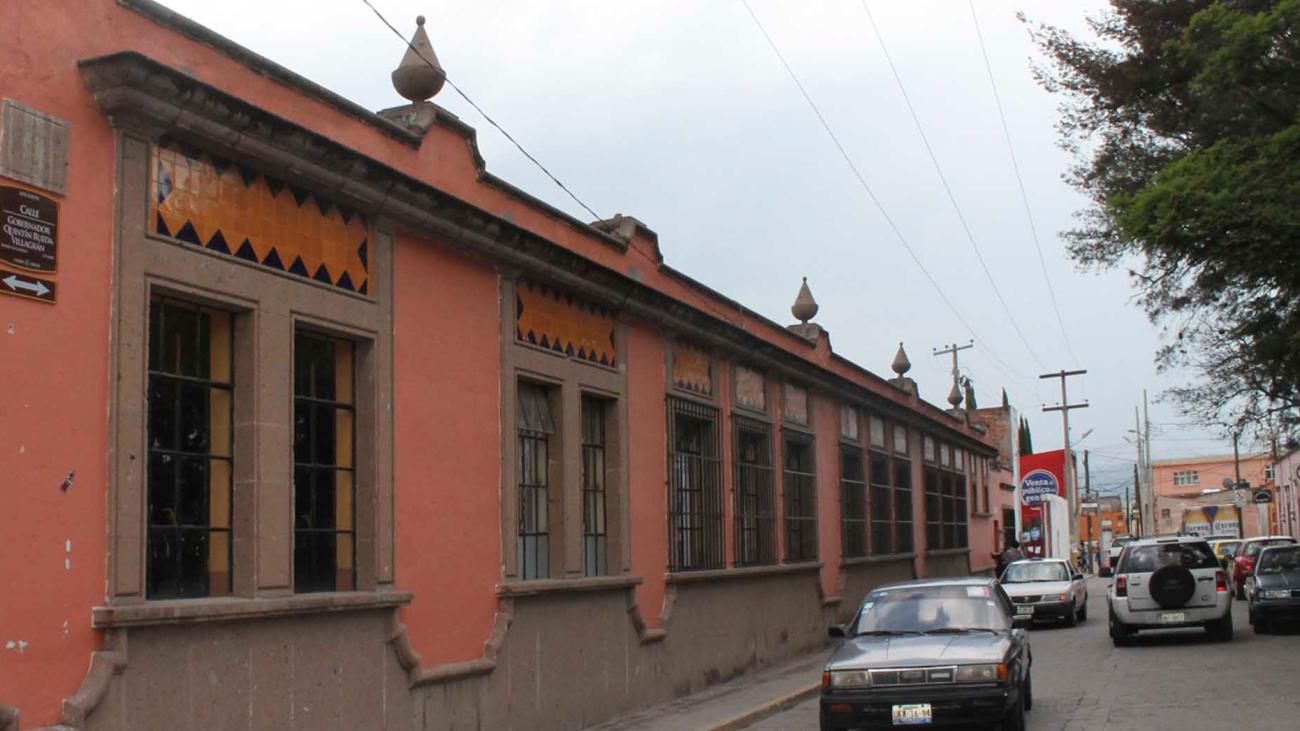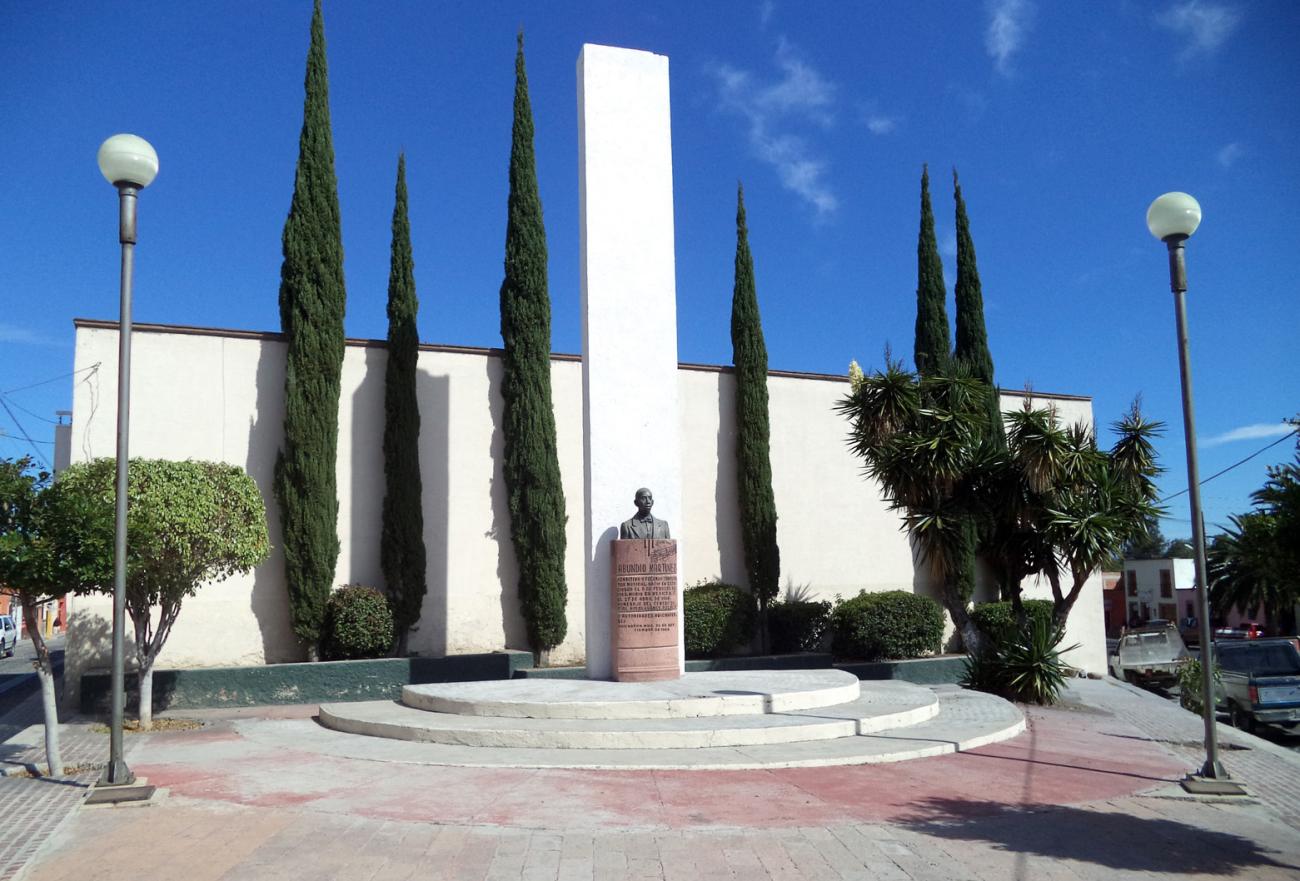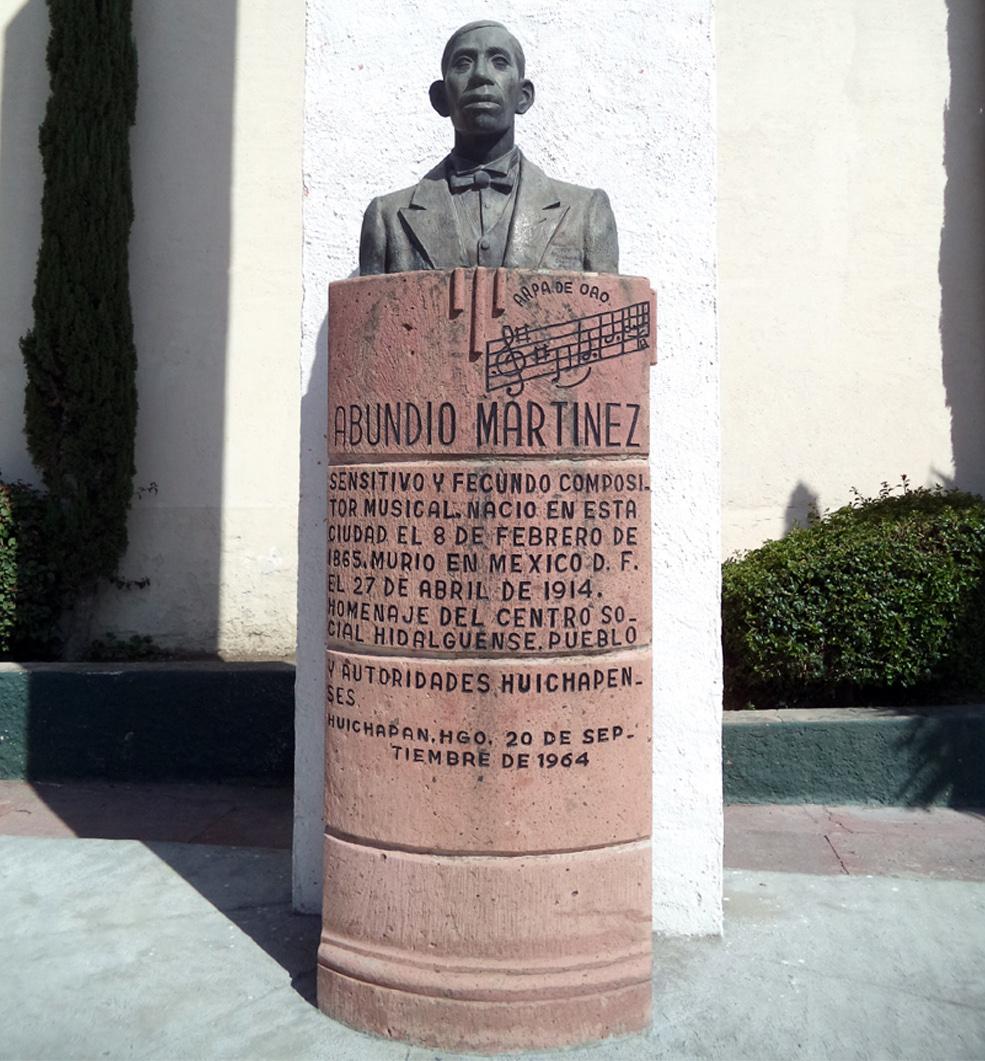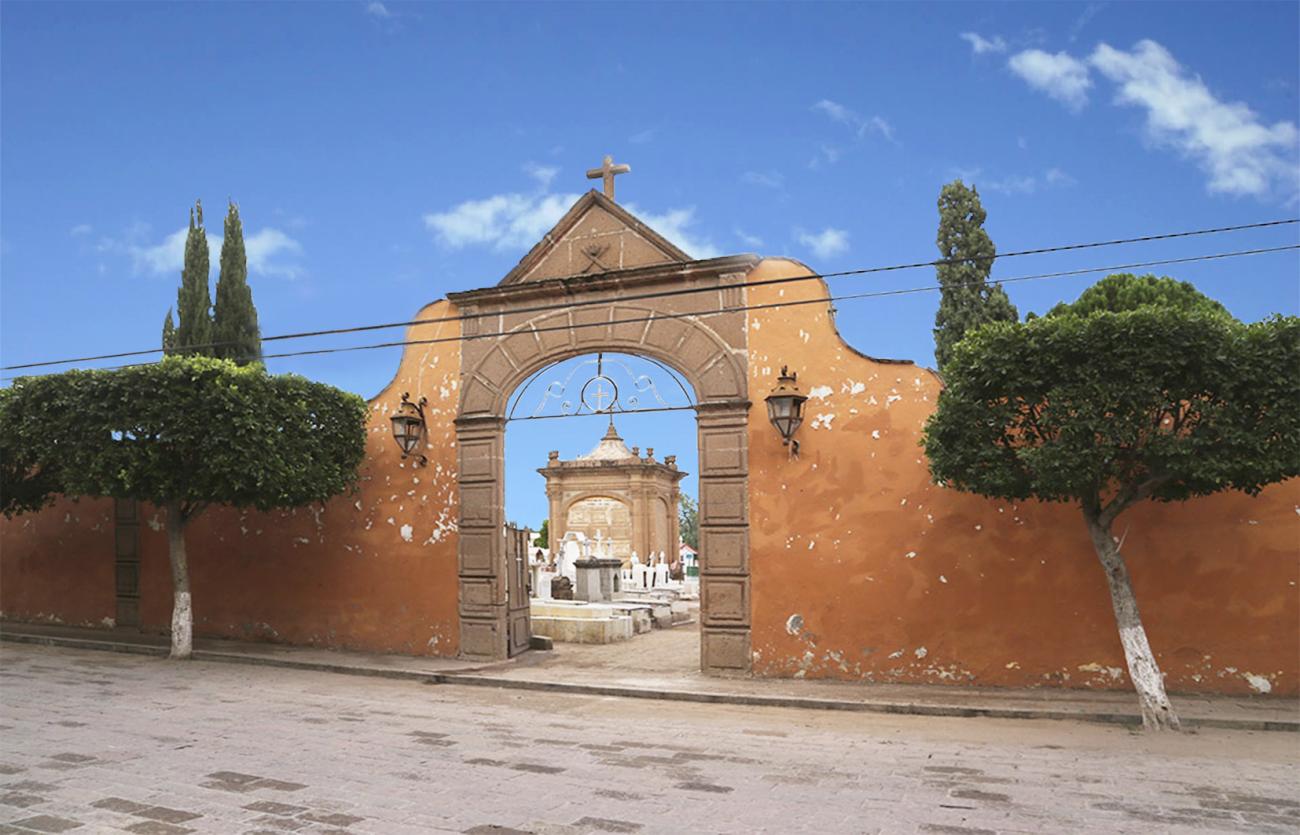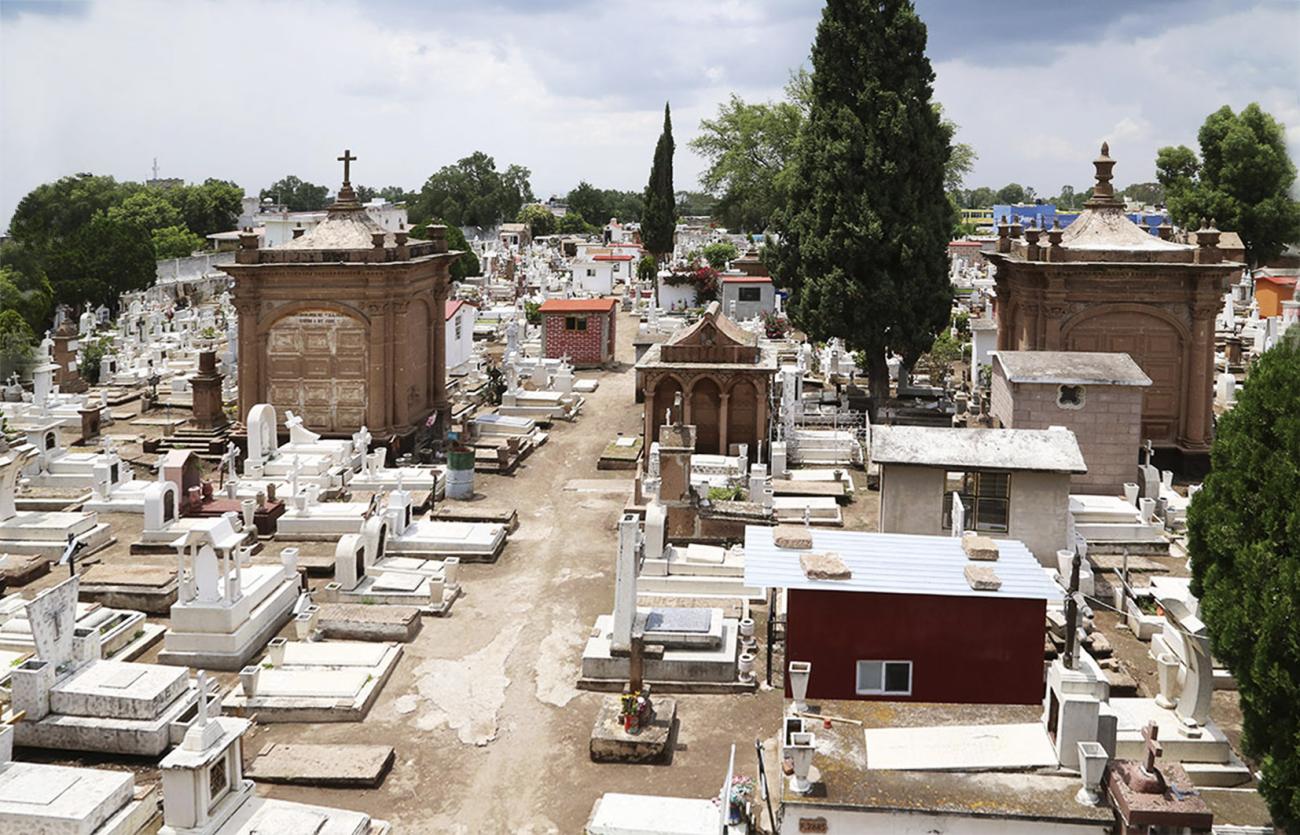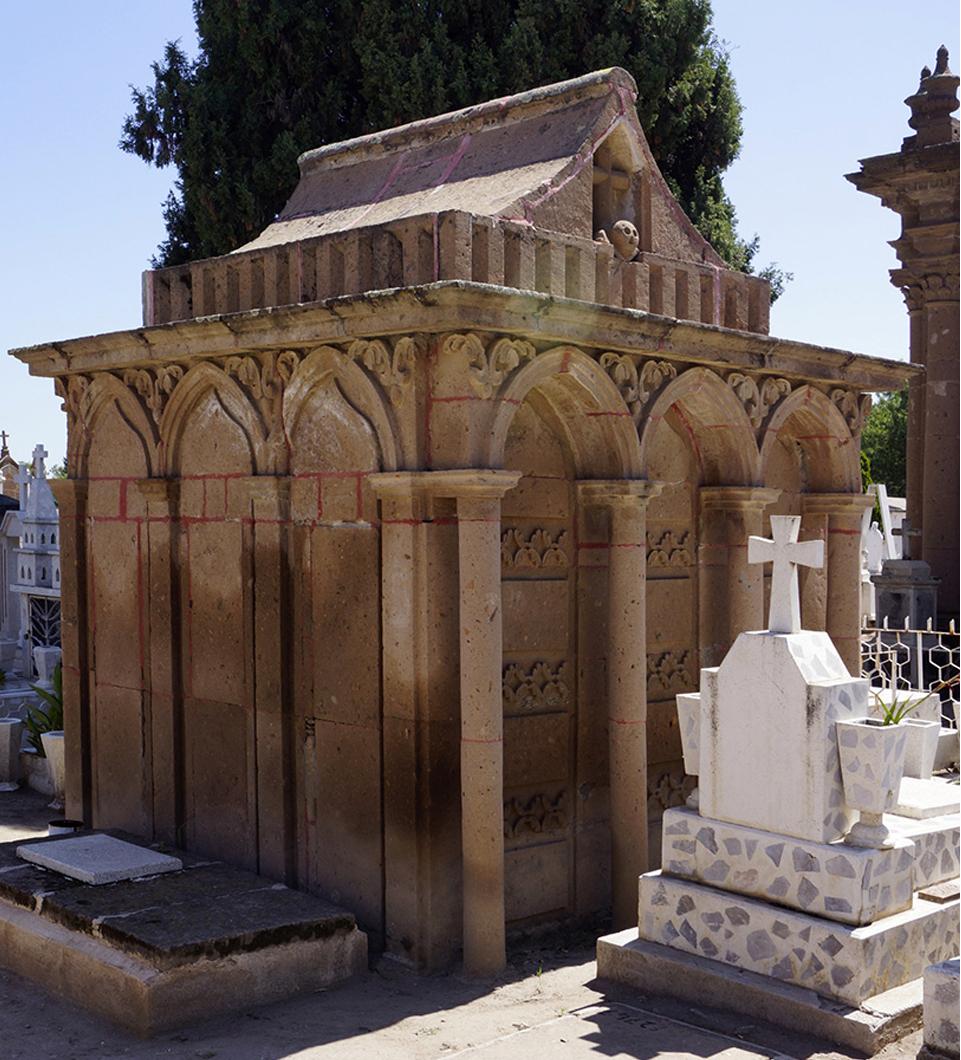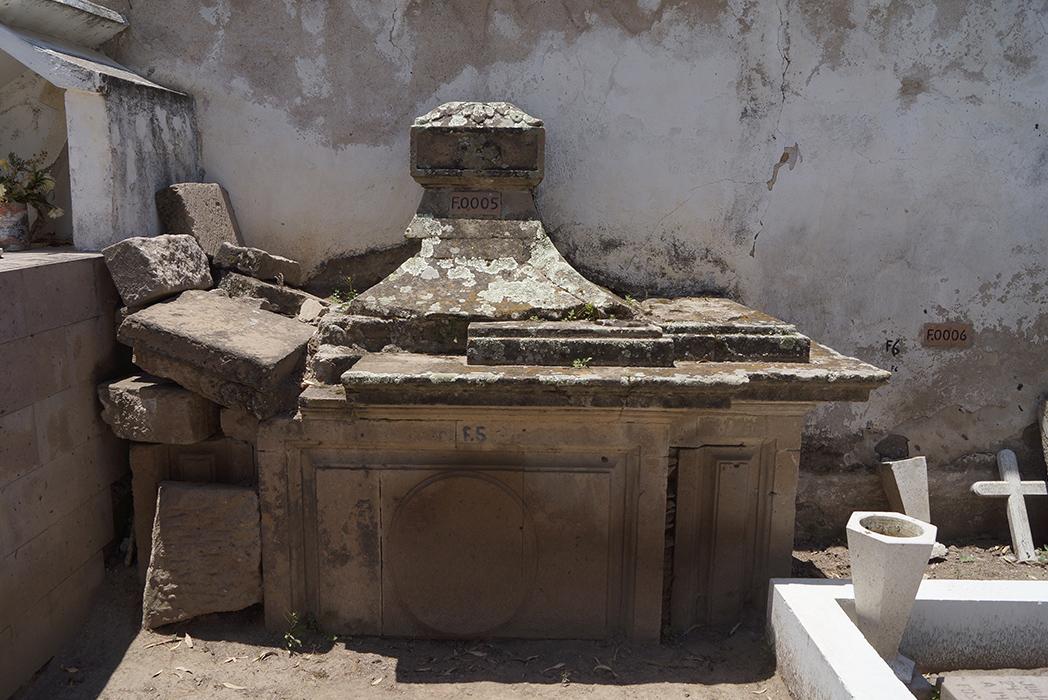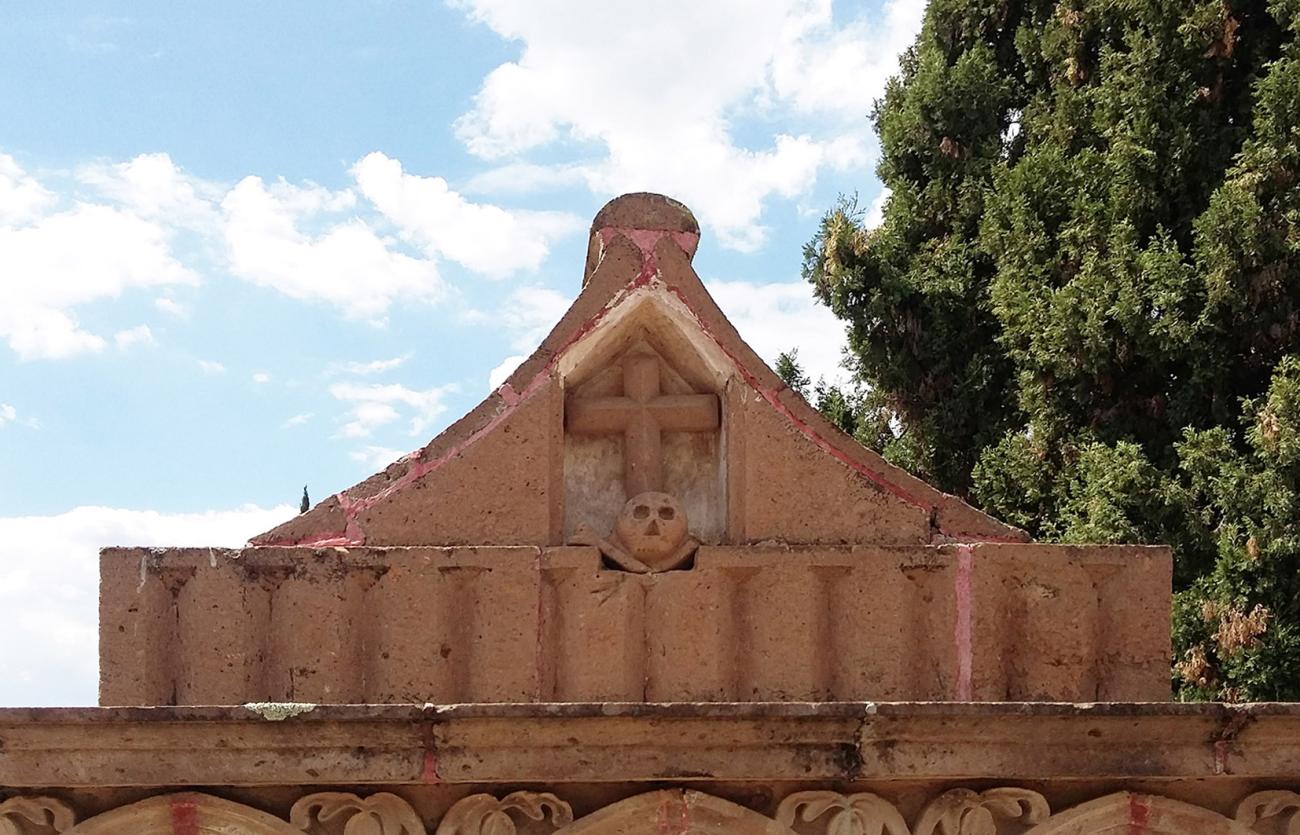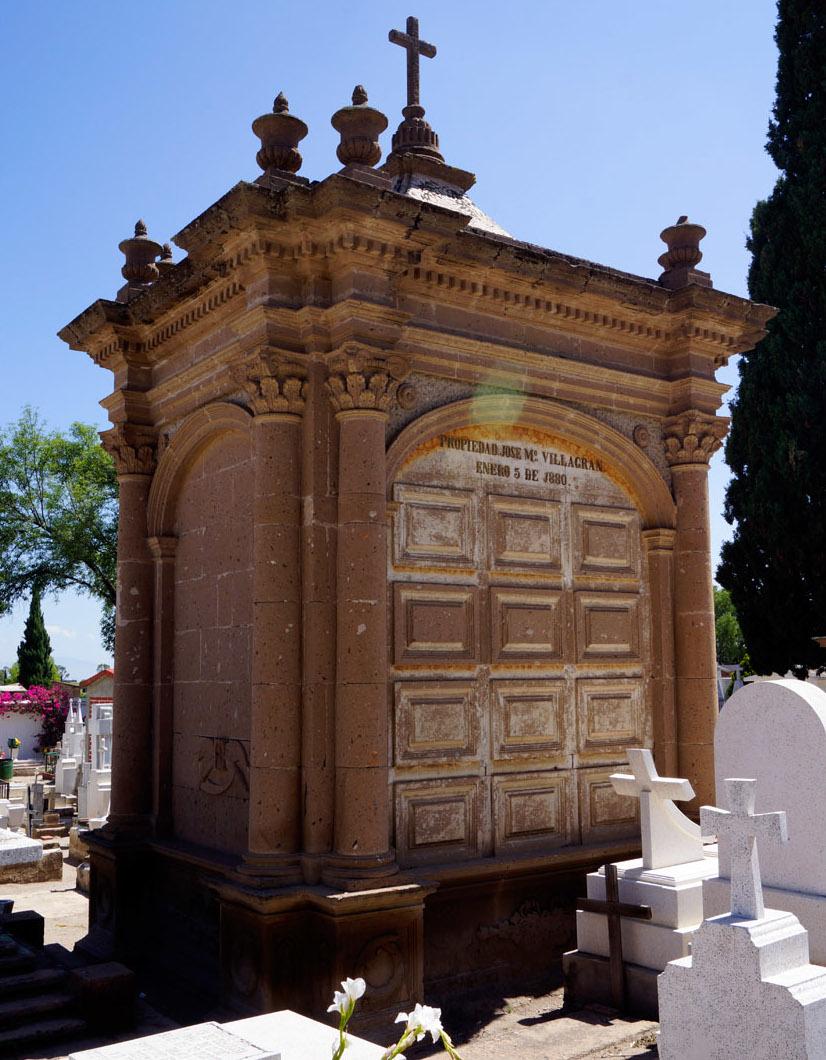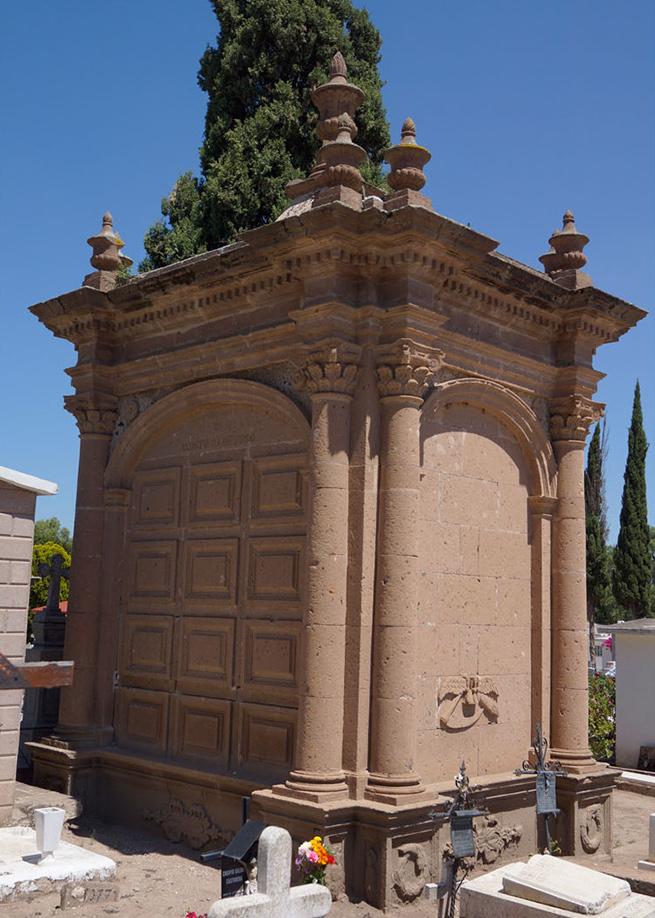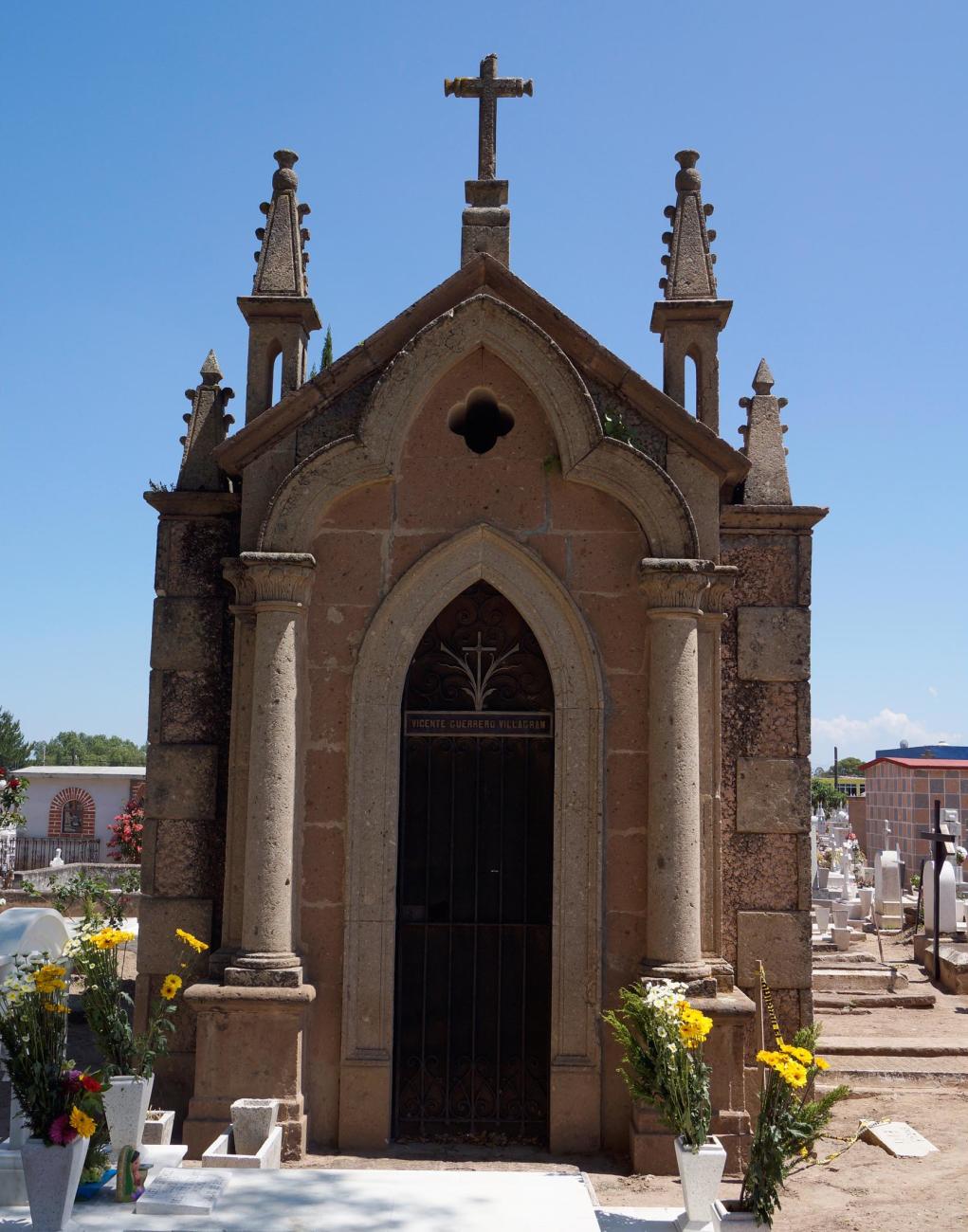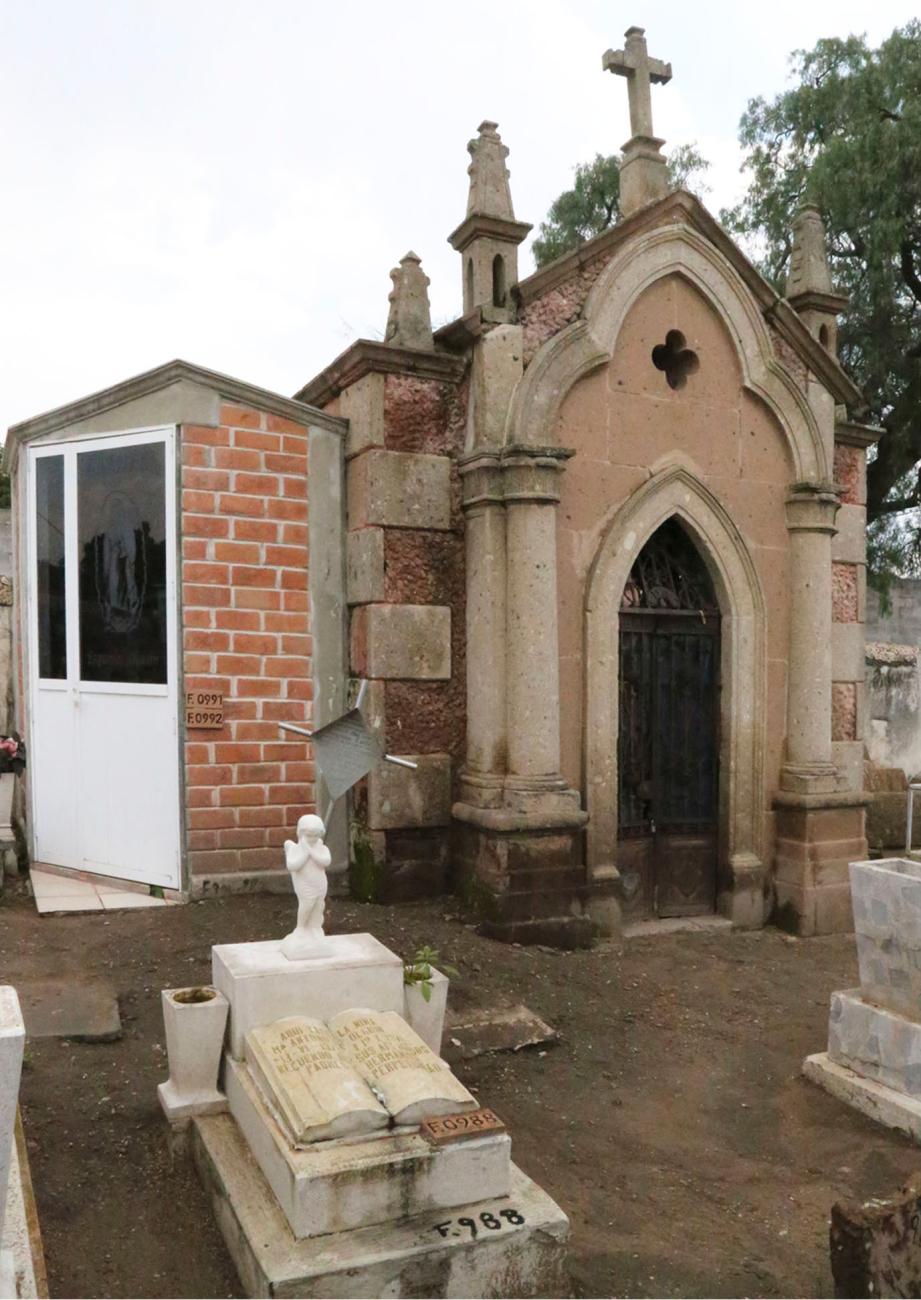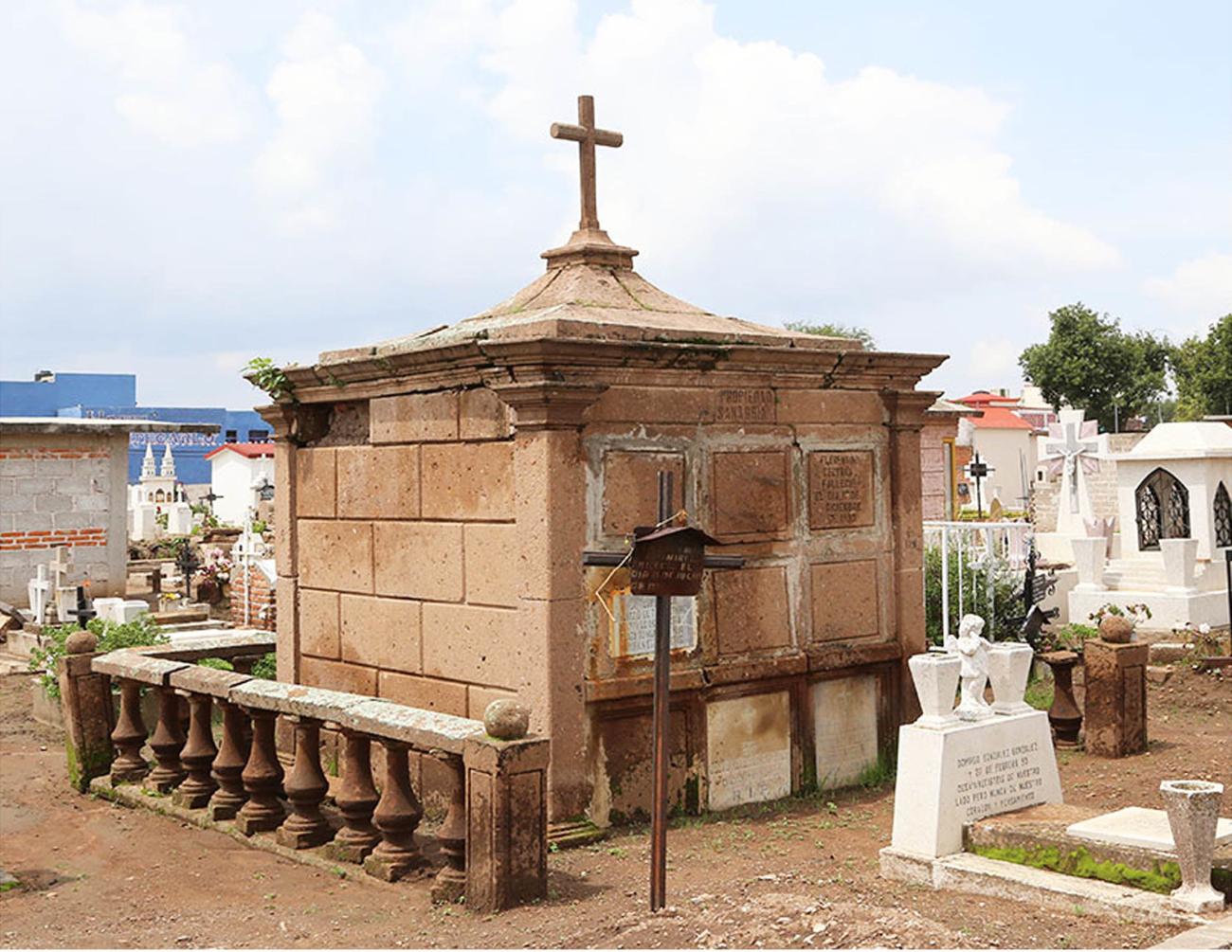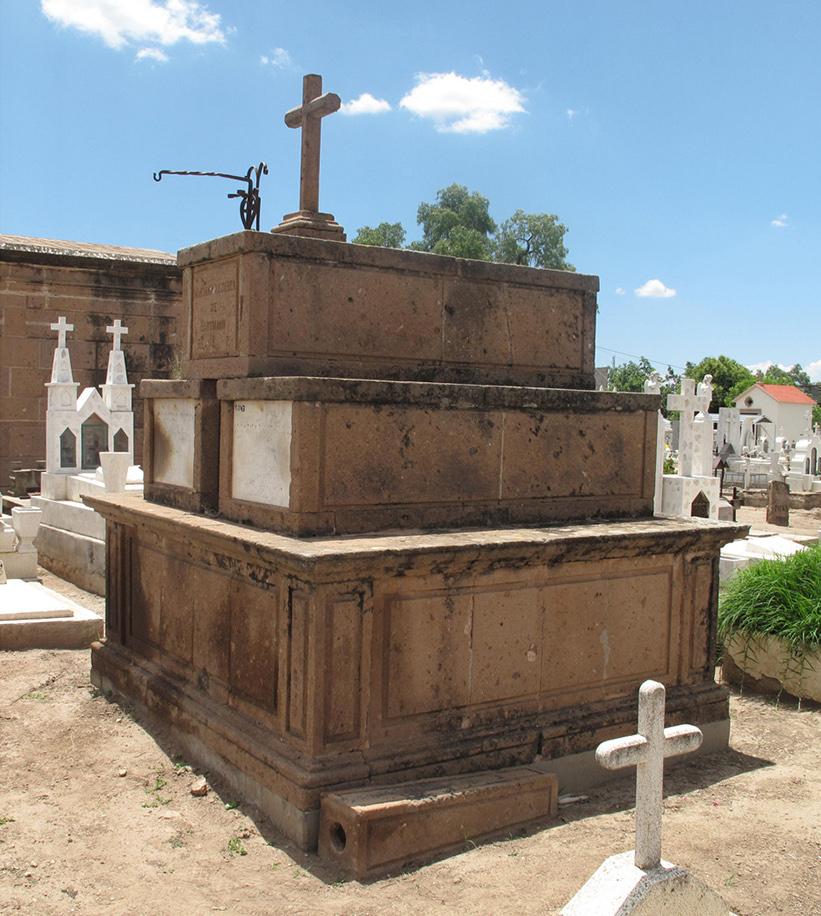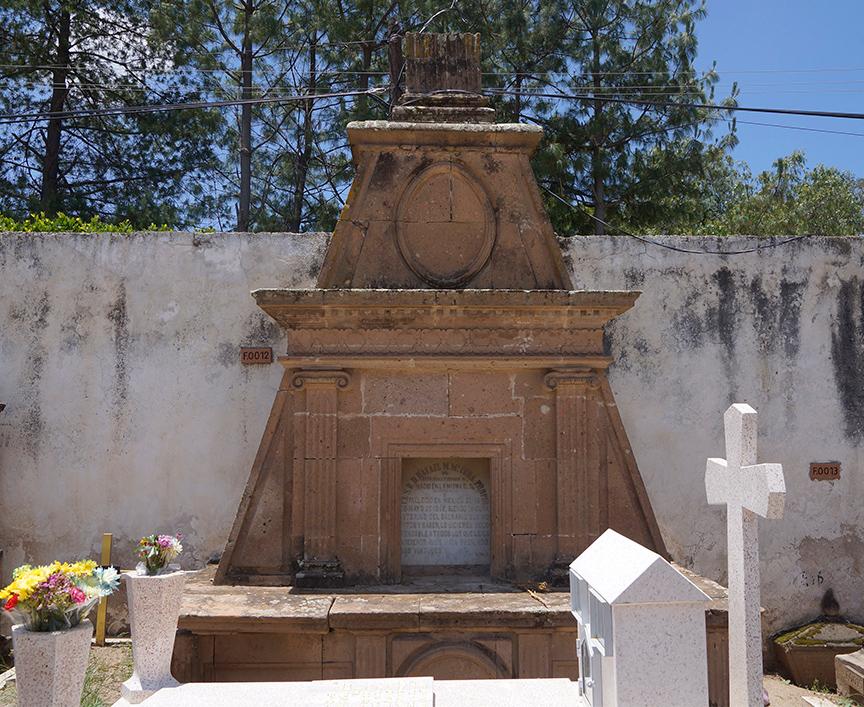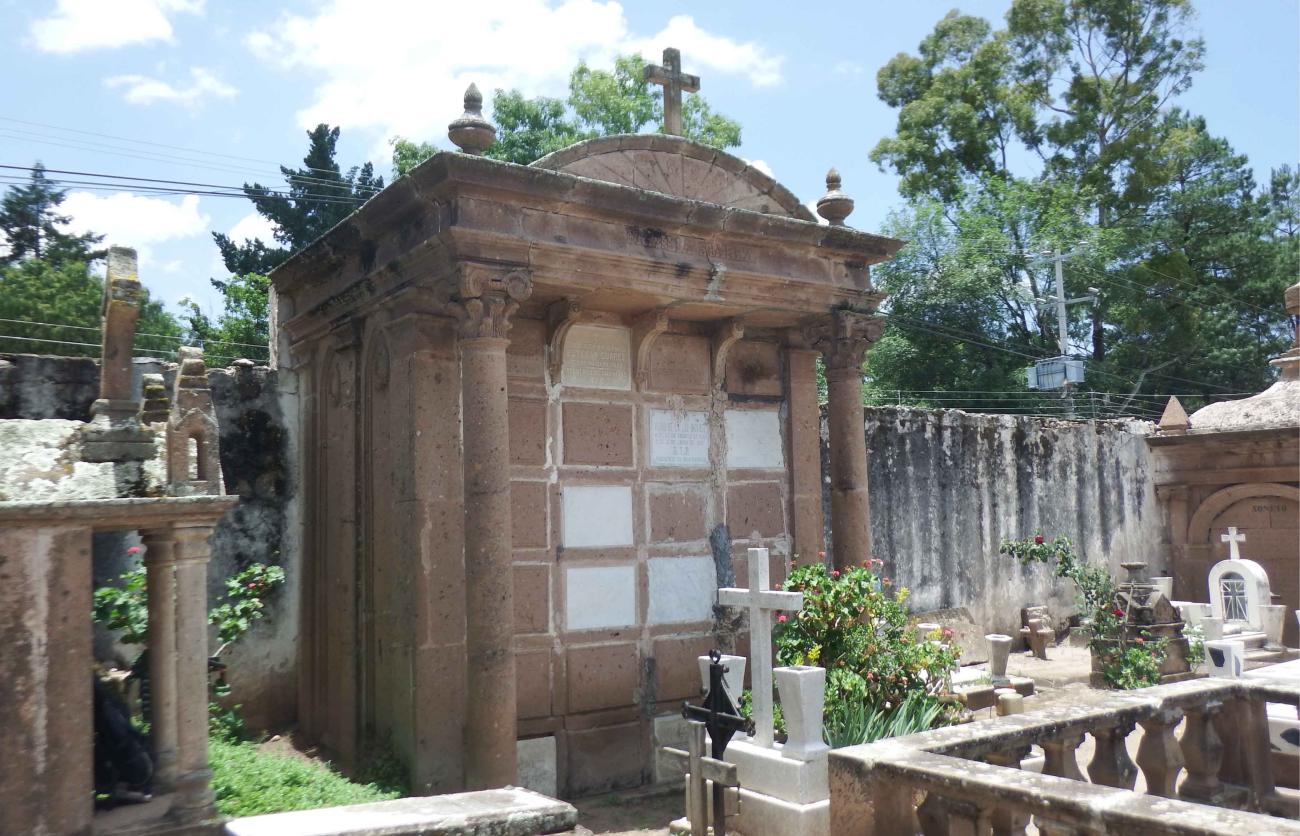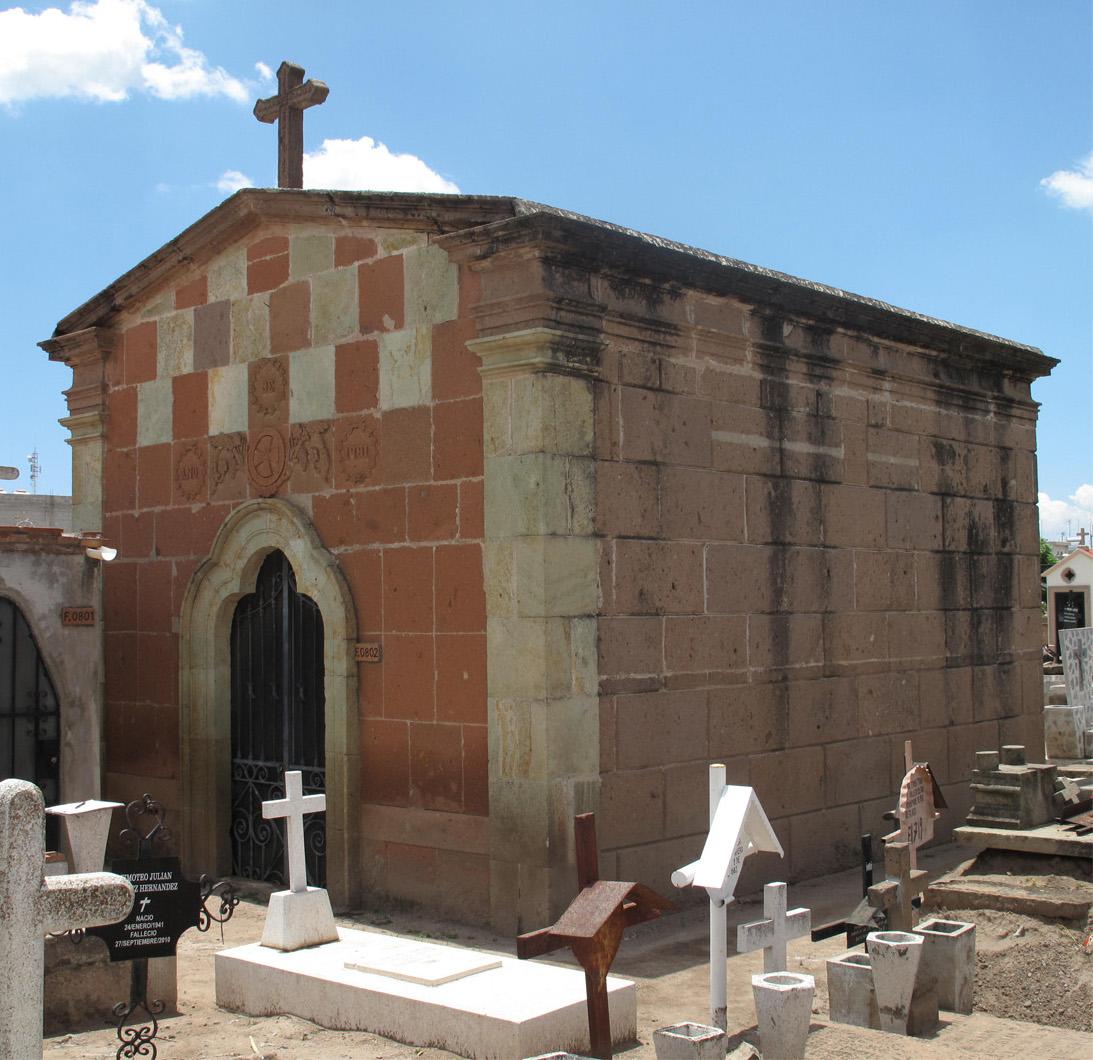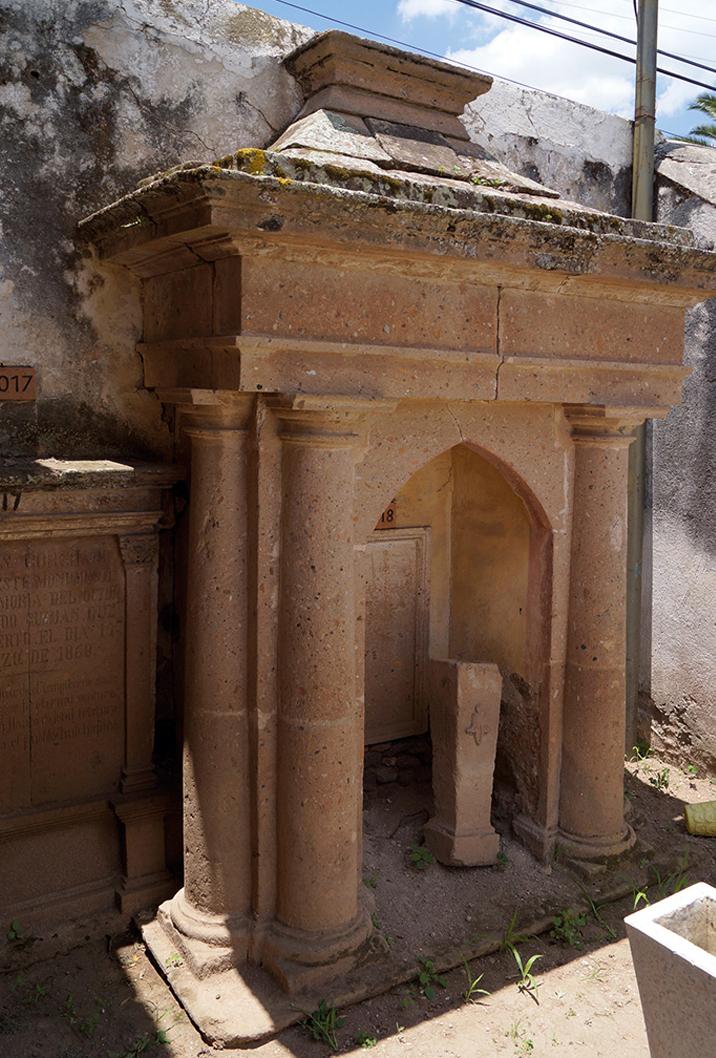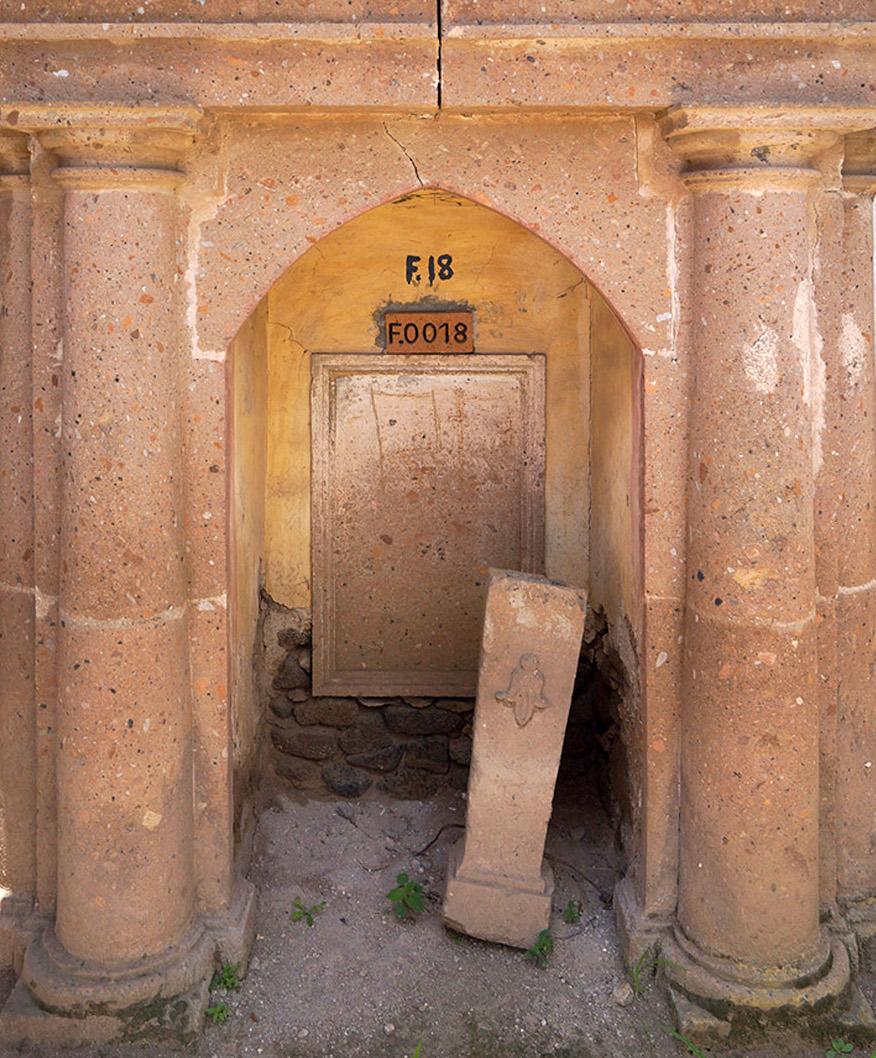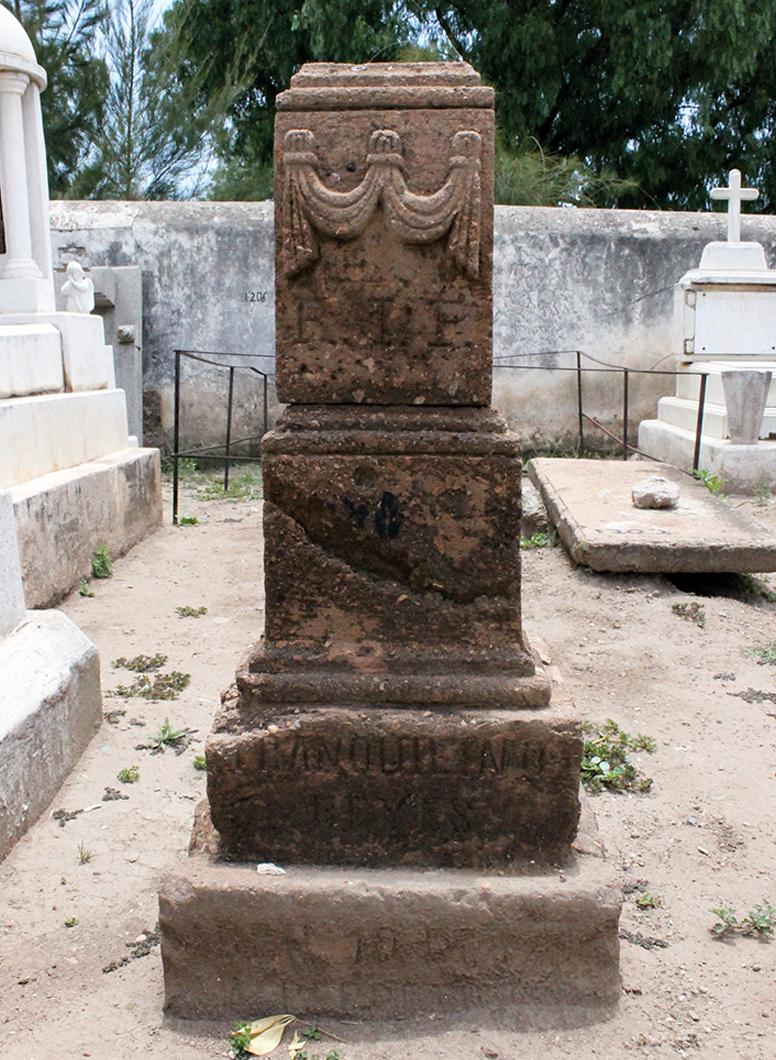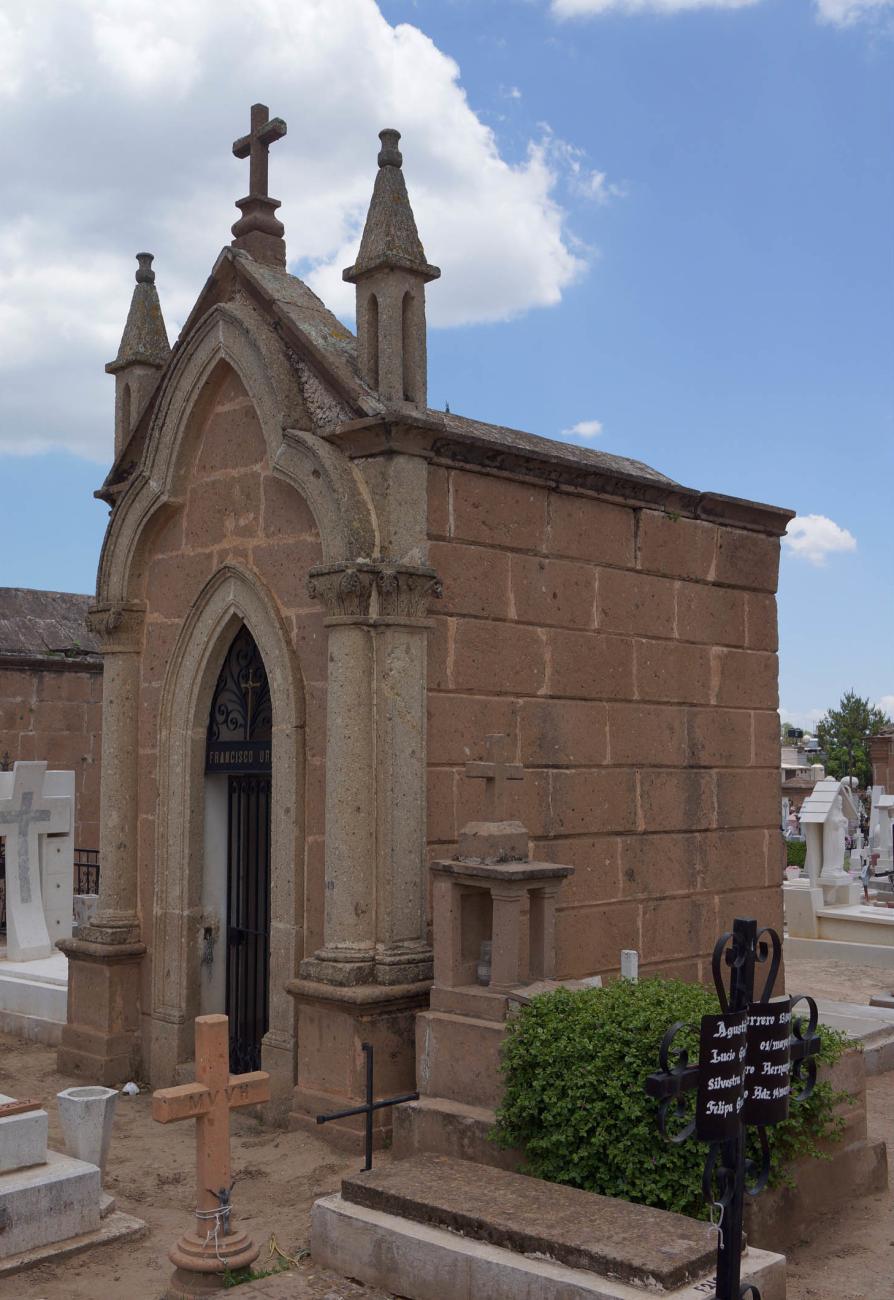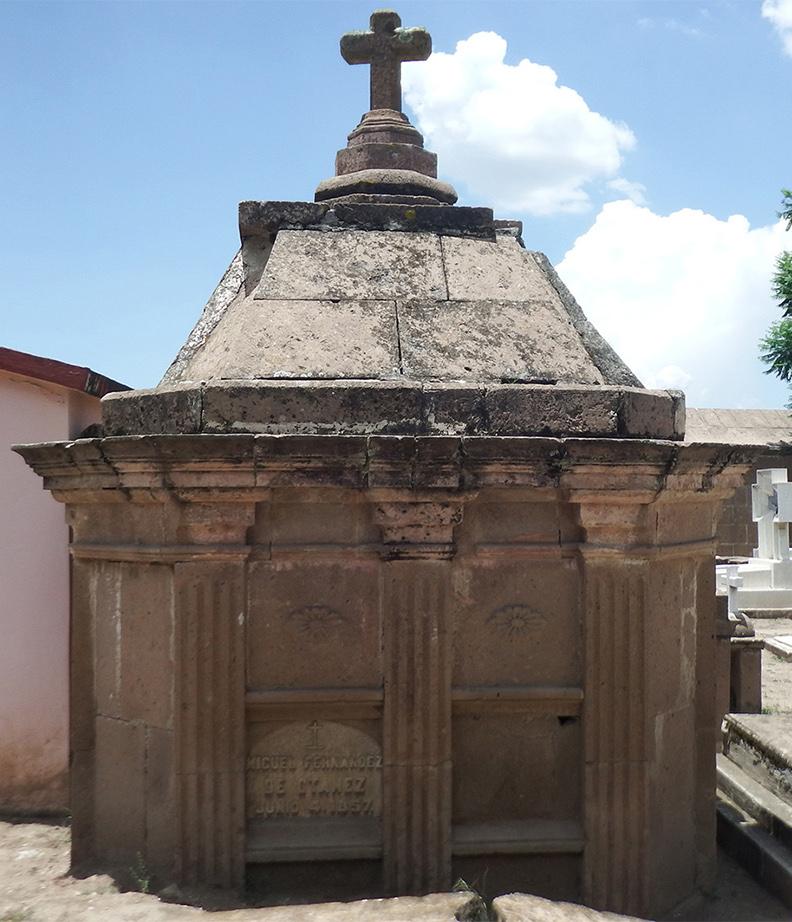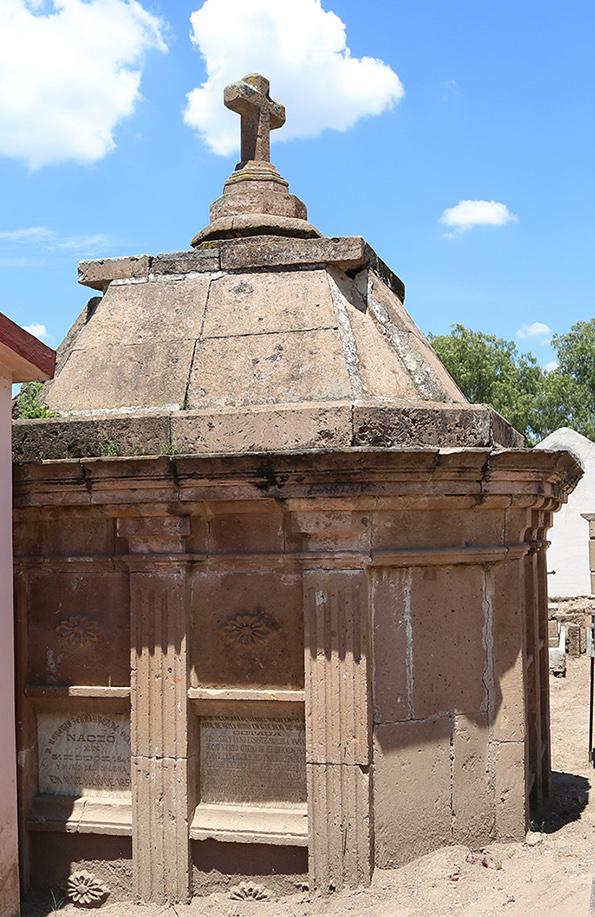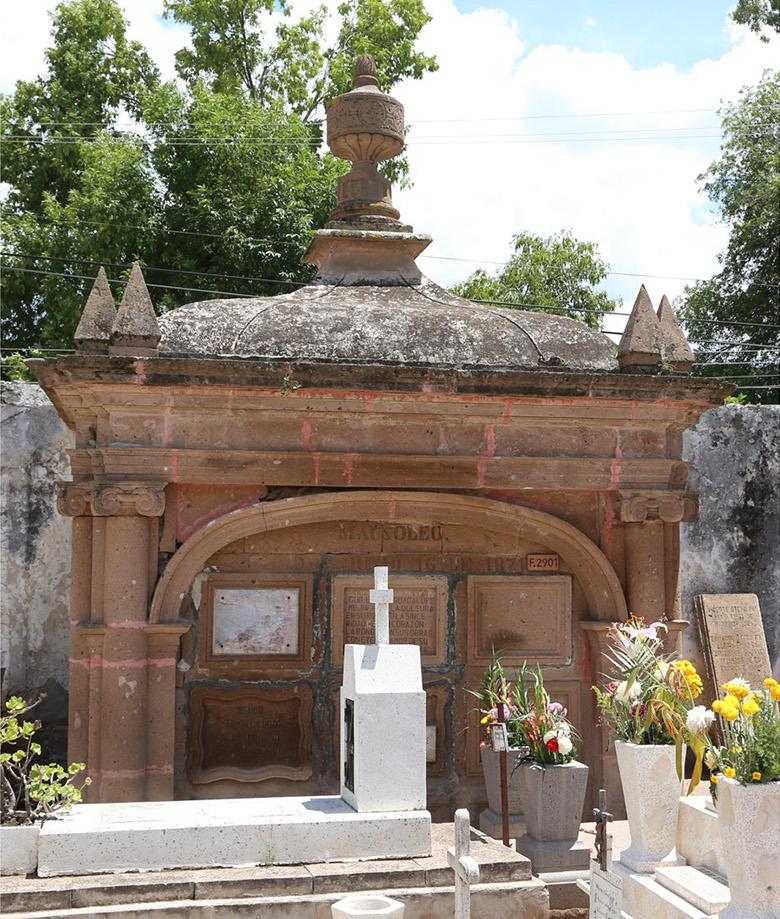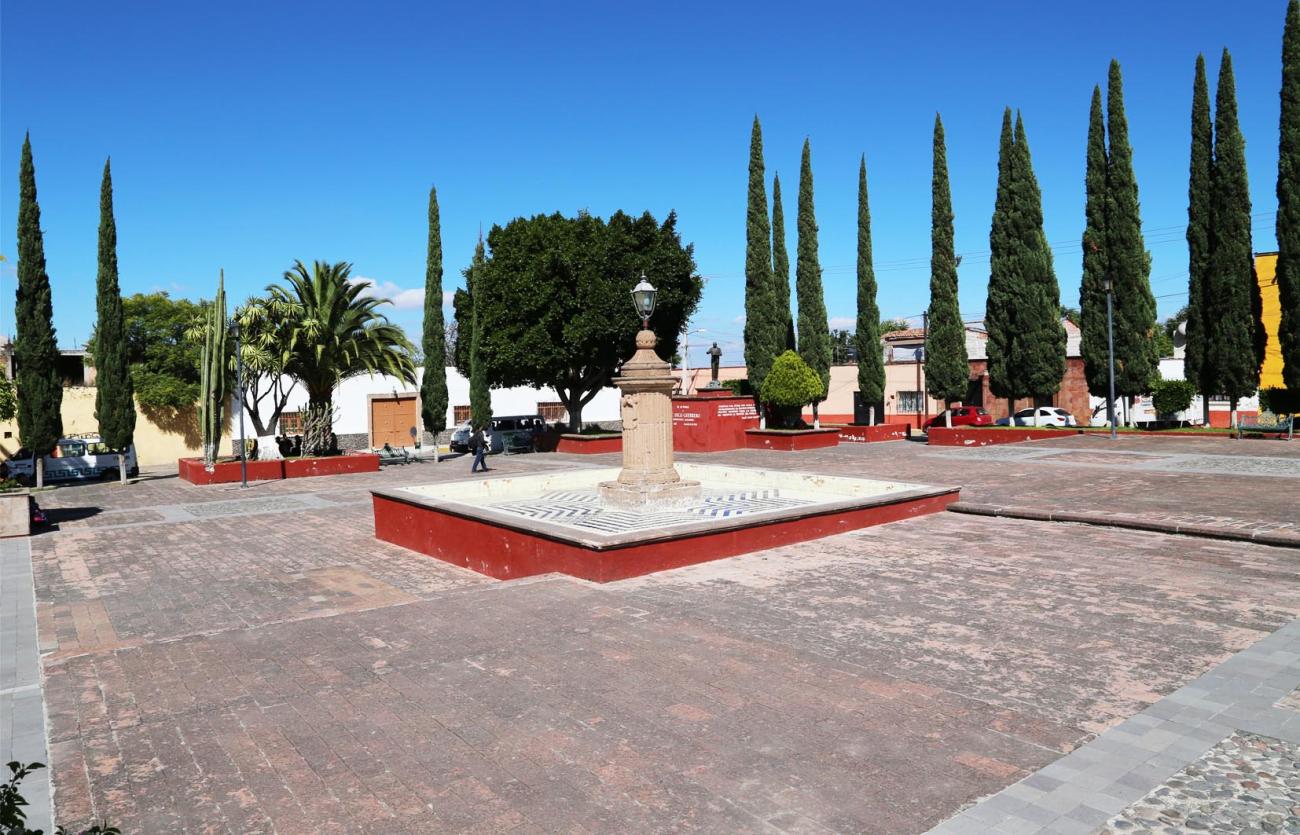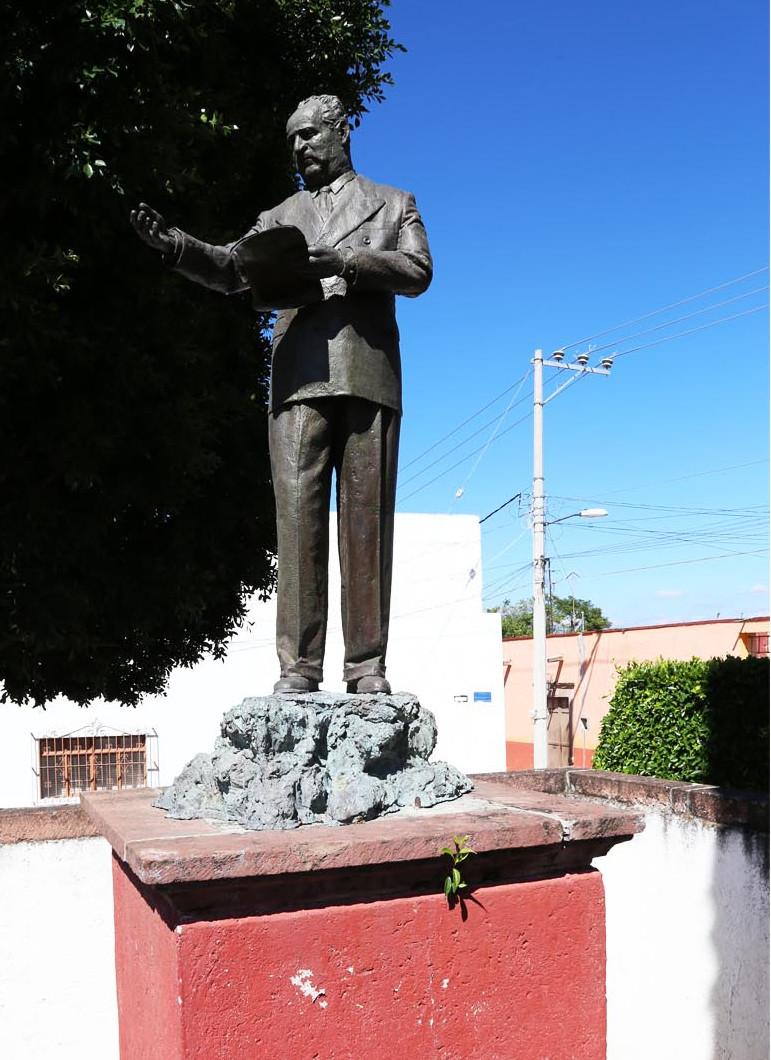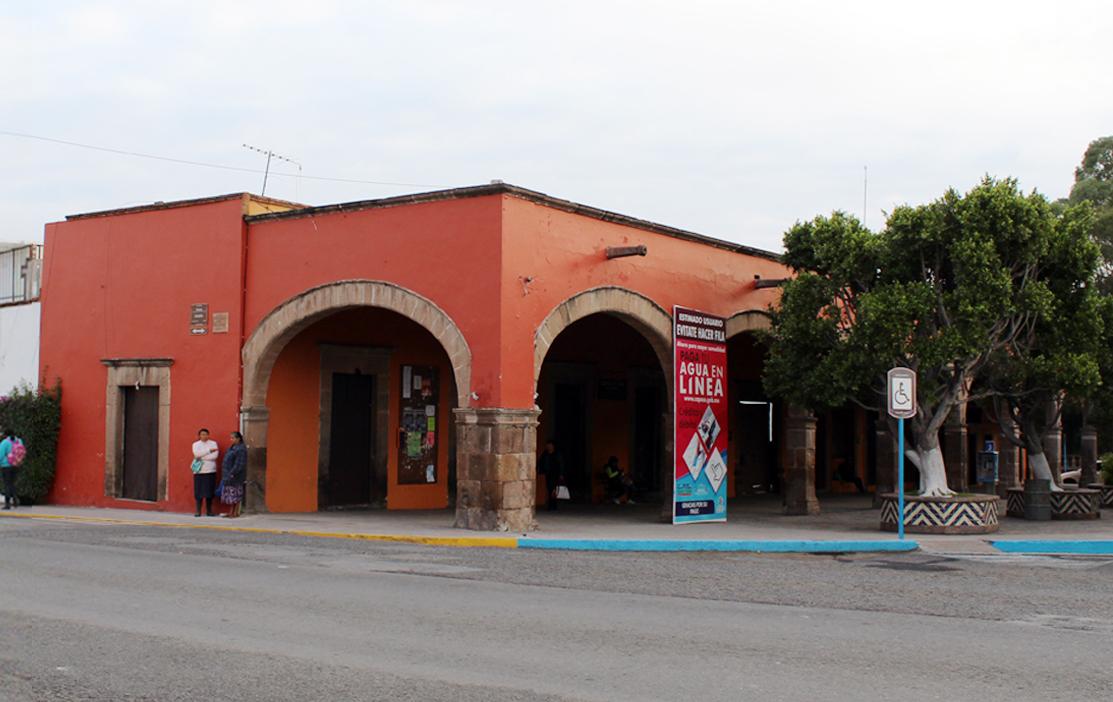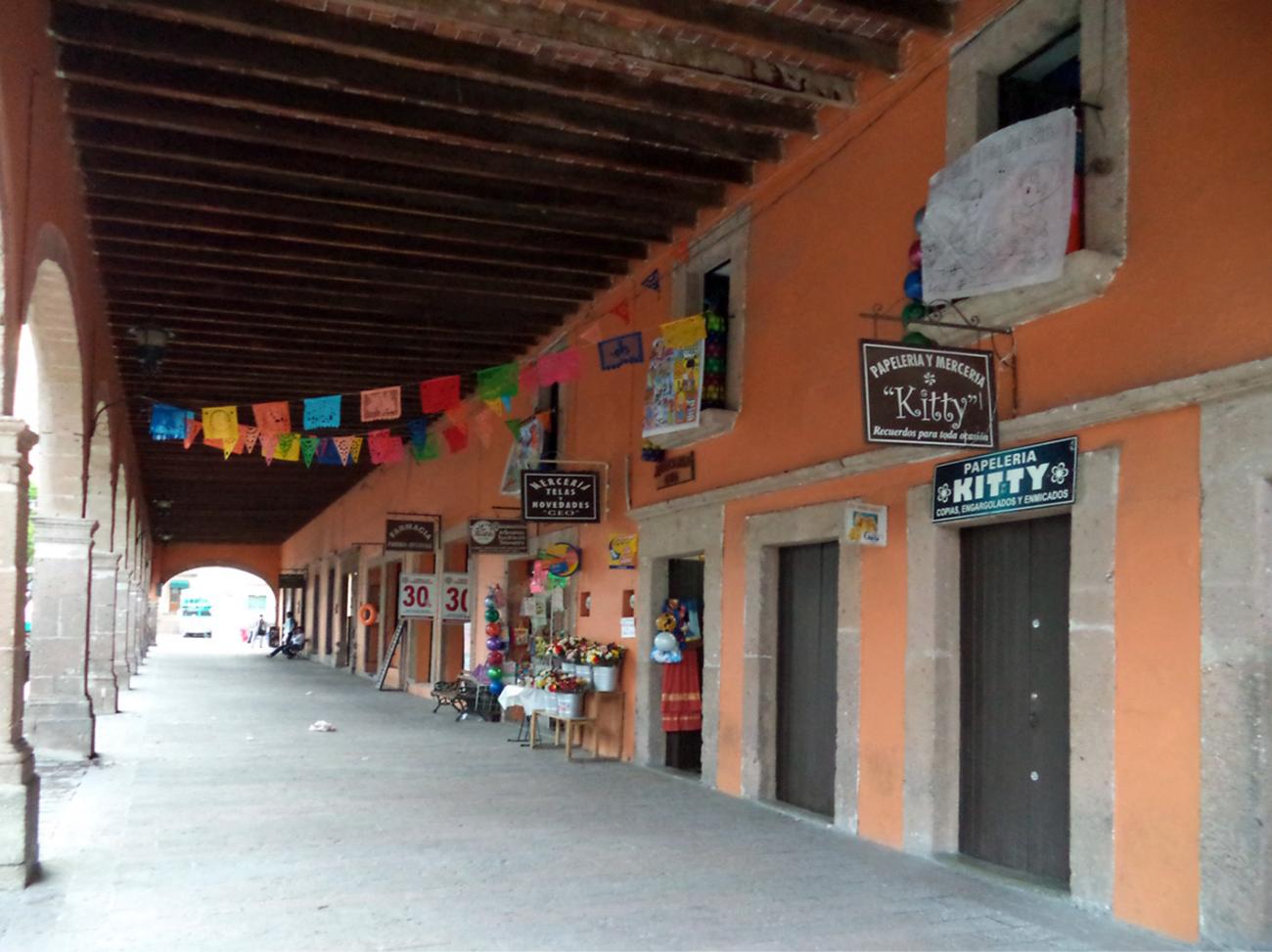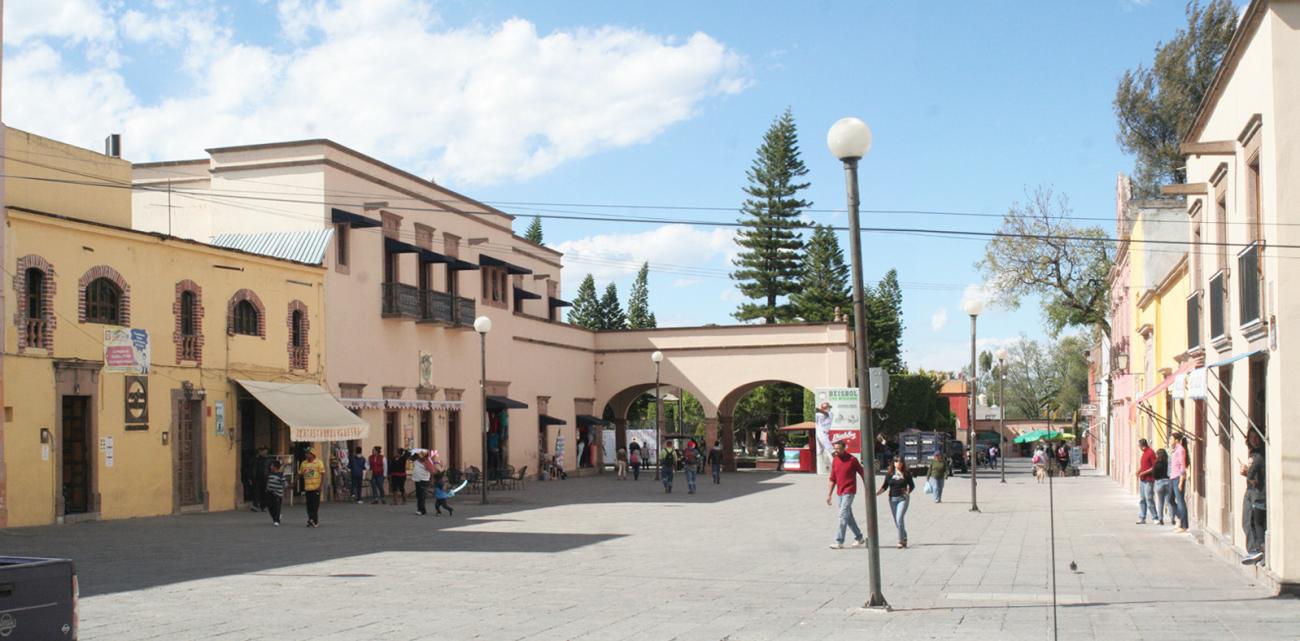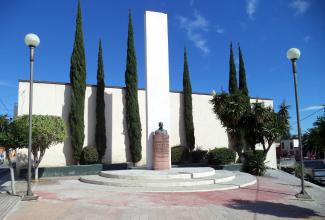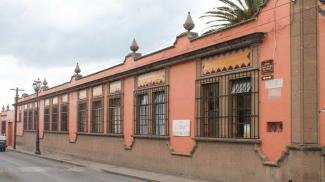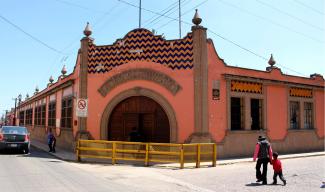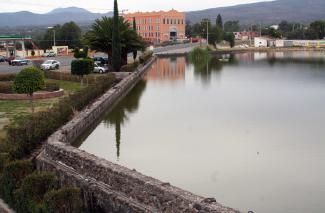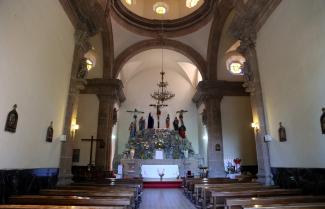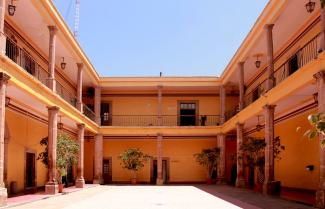Huichapan
Historical Monuments Zone
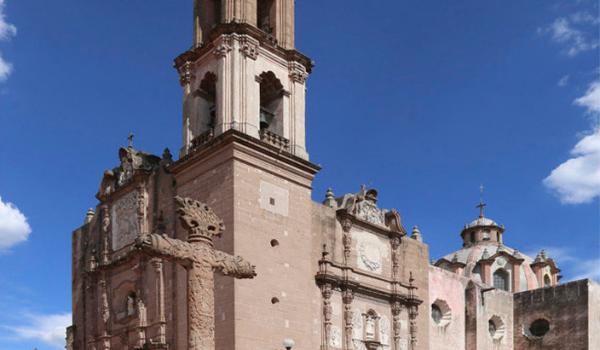
Templo de San Mateo Apóstol
16th-century religious building. The cloister and the cross in the atrium are probably the only original elements; it was rebuilt in the 17th and 18th centuries.
Templo de San Mateo Apóstol
16th-century religious building. The cloister and the cross in the atrium are probably the only original elements; it was rebuilt in the 17th and 18th centuries. The current temple dates from the 18th century, built between 1753 and 1763 under the direction of the mestizo master builder Antonio Simón.
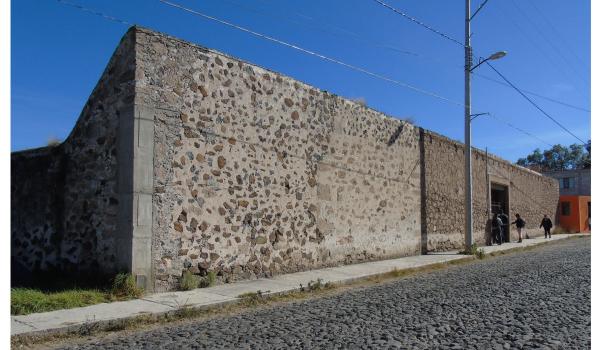
Antigua hacienda La Venta
An 18th-century civil building, its façade is made of stone and adobe masonry.
Antigua hacienda La Venta
An 18th-century civil building, its façade is made of stone and adobe masonry.
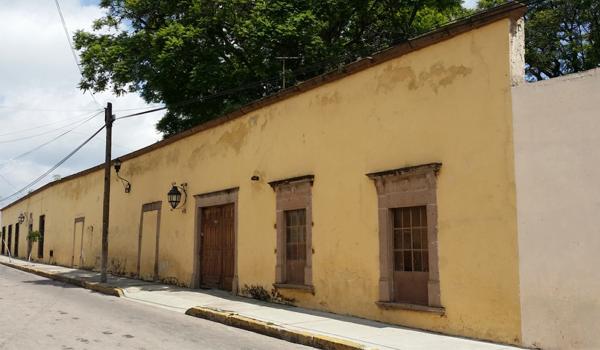
Quinta las Jacarandas
18th-century building. It originally included the property adjacent to the north, where the stables were located. Its final finish features plaster, yellow paint, and brown stonework on lintels and jambs.
Quinta las Jacarandas
18th-century building. It originally included the property adjacent to the north, where the stables were located. Its final finish features plaster, yellow paint, and brown stonework on lintels and jambs.
Presidencia Municipal
In 1887, Colonel Francisco Limón and Florencio González, municipal president, obtained authorization to build a new municipal palace, as the previous one was in very poor condition.
Presidencia Municipal
In 1887, Colonel Francisco Limón and Florencio González, municipal president, obtained authorization to build a new municipal palace, as the previous one was in very poor condition. At the beginning of the 18th century, this site was occupied by the Royal Houses, where government and administrative activities were carried out and where the representatives of the Crown lived.
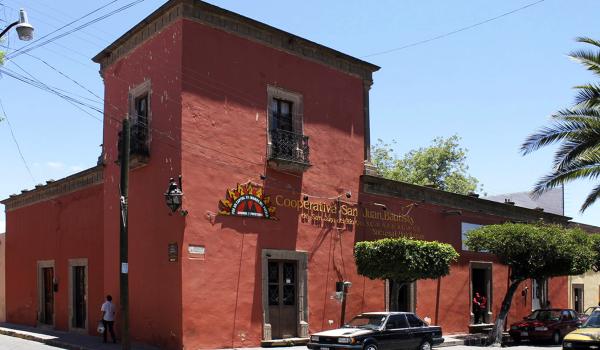
Inmueble civil
A 19th-century building, it has two levels with flattened and painted walls.

Templo del Señor del Calvario
Although the work dates back to the 17th century, the construction of this temple follows the tradition of the 16th century, when chapels dedicated to the Lord of Calvary were built on the outskirts of towns and linked by roads to the main churches, where the Holy Week procession takes place.
Templo del Señor del Calvario
Although the work dates back to the 17th century, the construction of this temple follows the tradition of the 16th century, when chapels dedicated to the Lord of Calvary were built on the outskirts of towns and linked by roads to the main churches, where the Holy Week procession takes place. Construction work began in 1751 on the orders of Spanish infantry captain Manuel González de León.
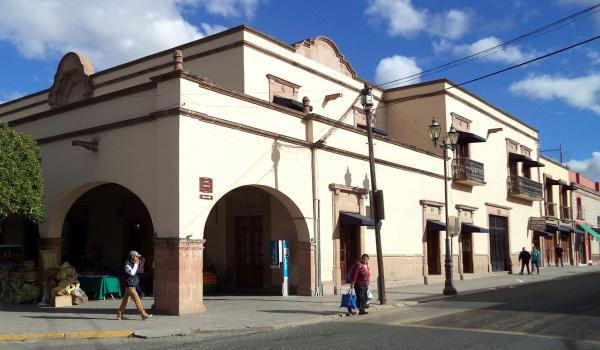
Portal Libertad
At the beginning of the 20th century, it had a portal with seven stone columns and a wooden roof. After renovation work, the new portal was made up of seven segmental arches.
Portal Libertad
At the beginning of the 20th century, it had a portal with seven stone columns and a wooden roof. After renovation work, the new portal was made up of seven segmental arches.
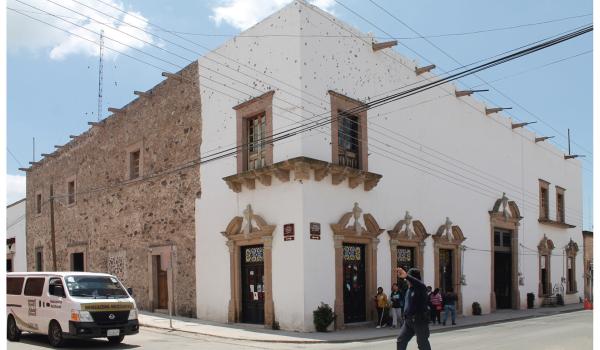
Antigua Casa del Diezmo
Tithing houses were buildings created by the Catholic Church to receive and store the contributions that the people gave to the church, usually in kind.
Antigua Casa del Diezmo
Tithing houses were buildings created by the Catholic Church to receive and store the contributions that the people gave to the church, usually in kind. On July 7, 1861, the conservative army led by Tomás Mejía seized this property and used it as a defensive stronghold, called “Las palomas.” During the 20th century, this building was known as “La borrasca,” an important store.
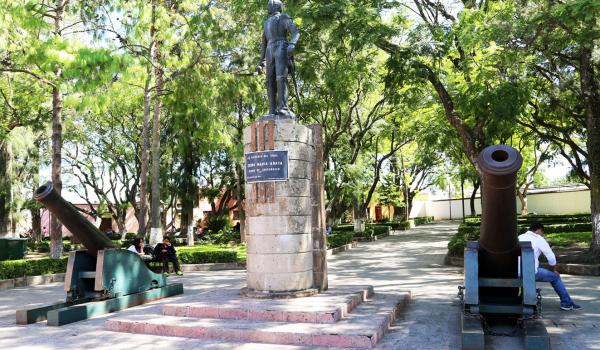
Monumento al General Pedro María Anaya
Pedro María Anaya was born in Huichapan on May 20, 1794. At the age of 17, he began his military career as a cadet in the Tres Villas regiment, participating in the independence movement. He was also part of the Plan of Iguala in 1821.
Monumento al General Pedro María Anaya
Pedro María Anaya was born in Huichapan on May 20, 1794. At the age of 17, he began his military career as a cadet in the Tres Villas regiment, participating in the independence movement. He was also part of the Plan of Iguala in 1821. In 1833, he was promoted to the rank of general and served as Secretary of War and Navy from 1832 to 1833. He later held a seat in the Chamber of Deputies and was elected interim president on two occasions. He participated in the defense of Churubusco on August 20, 1847; he was captured by the U.S. Army and released after the signing of the Treaty of Guadalupe. This monument was commissioned by Javier Rojo Gómez and inaugurated on April 19, 1941.
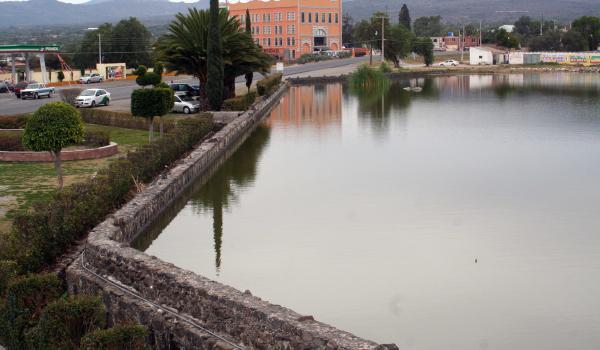
Presa Metethé
Structure built in the 18th century. It has an irregular floor plan and the curtain wall is made of stone masonry; its depth is approximately 5 m.
Presa Metethé
Structure built in the 18th century. It has an irregular floor plan and the curtain wall is made of stone masonry; its depth is approximately 5 m.
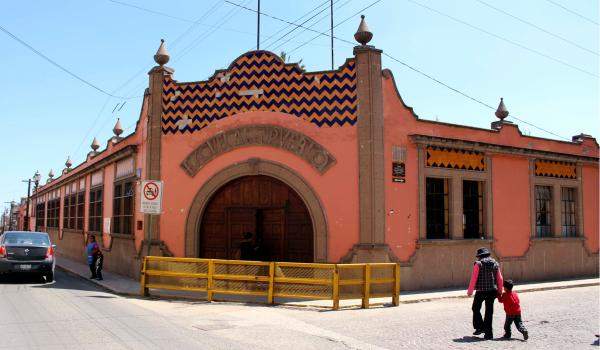
Escuela del Pueblo General Pedro María Anaya
During his term as governor (1937-1940), Javier Rojo Gómez ordered the construction of the Escuela del Pueblo (School of the People).
n>
Escuela del Pueblo General Pedro María Anaya
During his term as governor (1937-1940), Javier Rojo Gómez ordered the construction of the Escuela del Pueblo (School of the People).
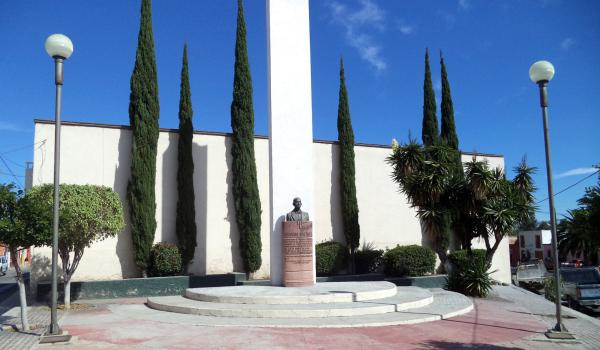
Monumento a Abundio Martínez
This monument was erected on September 20, 1964, in memory of the Huichapense composer Abundio Martínez.
n>
Monumento a Abundio Martínez
This monument was erected on September 20, 1964, in memory of the Huichapense composer Abundio Martínez.
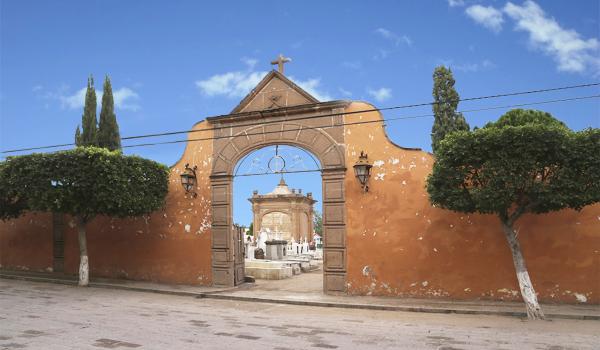
Panteón Municipal
A 19th-century complex, its original layout is rectangular, but it has been expanded to the east and has four entrances distributed across the three sections that make up the cemetery. Its perimeter wall is made of stone masonry with stone pilasters.
Panteón Municipal
A 19th-century complex, its original layout is rectangular, but it has been expanded to the east and has four entrances distributed across the three sections that make up the cemetery. Its perimeter wall is made of stone masonry with stone pilasters. The main entrance leads to the oldest section, which houses approximately 60 tombs of historical or artistic significance.
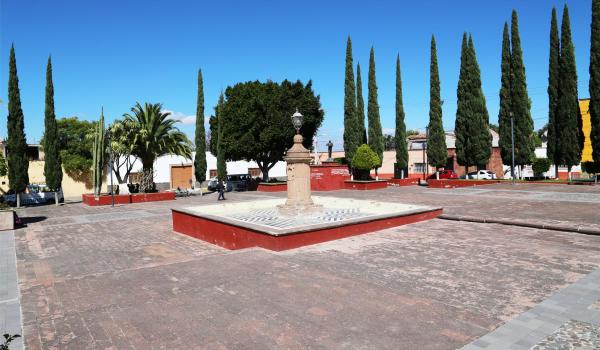
Plaza de la Campana
In 1903, it was known as “Plazuela Romero,” but today it is known as “Plazuela Nicolás Bravo” or “Plazuela José Lugo Guerrero.” In the center of the plaza is a fountain with a square base. On either side are staircases. The upper platform has a square planter in the center with four large pots.
Plaza de la Campana
In 1903, it was known as “Plazuela Romero,” but today it is known as “Plazuela Nicolás Bravo” or “Plazuela José Lugo Guerrero.” In the center of the plaza is a fountain with a square base. On either side are staircases. The upper platform has a square planter in the center with four large pots. In the northeast corner, there is a sculpture dedicated to José Lugo Guerrero.
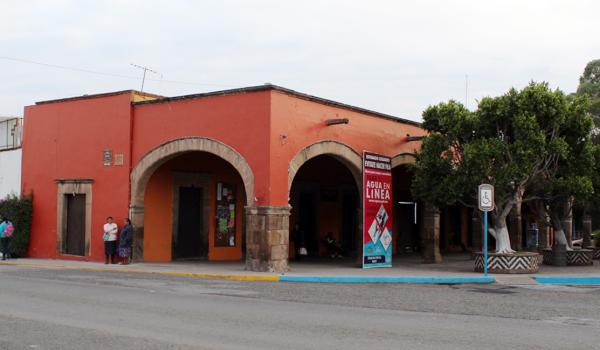
Portal Unión
This 18th-century building features a series of nine semicircular arches resting on Attic columns with molded stone imposts, with a stone gargoyle above each keystone. The spandrels are painted pink and the roof beams are made of wood with red brick.
Portal Unión
This 18th-century building features a series of nine semicircular arches resting on Attic columns with molded stone imposts, with a stone gargoyle above each keystone. The spandrels are painted pink and the roof beams are made of wood with red brick.

Plaza Reforma
This space was created in the 18th century and has served various purposes.

